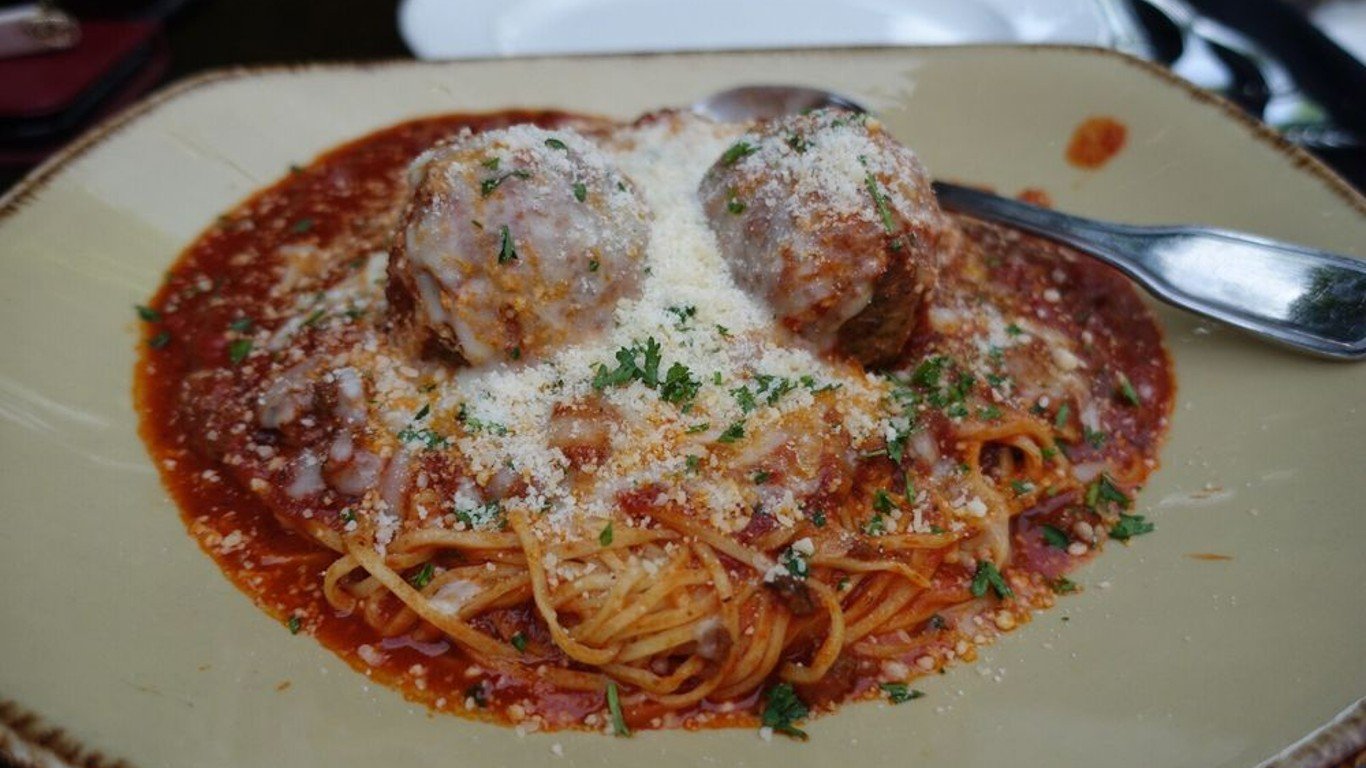

Italian restaurants in America today are many and varied, and much more authentic and/or regionally focused and/or contemporary in style than they used to be. It’s possible to find real Ligurian, Roman, Sicilian, and Calabrian dishes around the country now — not just their Italian-American approximations. At the same time, restaurants like La Tavola Trattoria in Atlanta, Scampo in Boston, and Vetri in Philadelphia are expanding the definitions of what Italian cuisine can be.
But meanwhile…There’s nothing wrong with Italian-American food. It’s not a bastardization of the real thing, it’s its own entity (like Tex-Mex in comparison to true Mexican fare), with legitimate cultural and culinary origins. Besides, who among us doesn’t sometimes crave spaghetti with meatballs, chicken scarpariello, or veal parmigiana?
The good news is that there are still plenty of old-school Italian places (sometimes referred to as “red sauce restaurants”) going strong around the U.S. — establishments serving the familiar dishes that we’ve come to know and love.
To determine the top 50 examples, 24/7 Tempo reviewed and extrapolated from lists and rankings on numerous food and general interest sites, including Eater, Yelp, The Daily Meal, Fodors, Business Insider, Thrillist, Food Network, Foursquare, Forbes, and Gayot, as well as a wide range of regional and city-specific sites.
Our choices cover some 24 states, with more than one example in Italian-American restaurant capitals like New York City, Chicago, Boston, and San Francisco. The majority were started by immigrants from Italy, though a handful are owned by non-Italian Americans or chefs and restaurateurs from other countries.
Click here to see the top 50 old-school Italian restaurants in America
While some of the places on our list serve pizza, we eliminated those that are primarily pizzerias. (Not that there’s anything wrong with pizza, of course. See our list of the 25 best pizza places in America.)
Some of our top choices are more than a century old, while one dates from only last year, though it has an undeniably old-school feeling. Occasionally, the founders and/or customers were connected to organized crime. Many have counted celebrities among their clientele — often Frank Sinatra, though also, in one instance, our current president. (Here is a list of Joe Biden’s favorite foods.)
All have interesting stories to tell and do what they do extremely well.
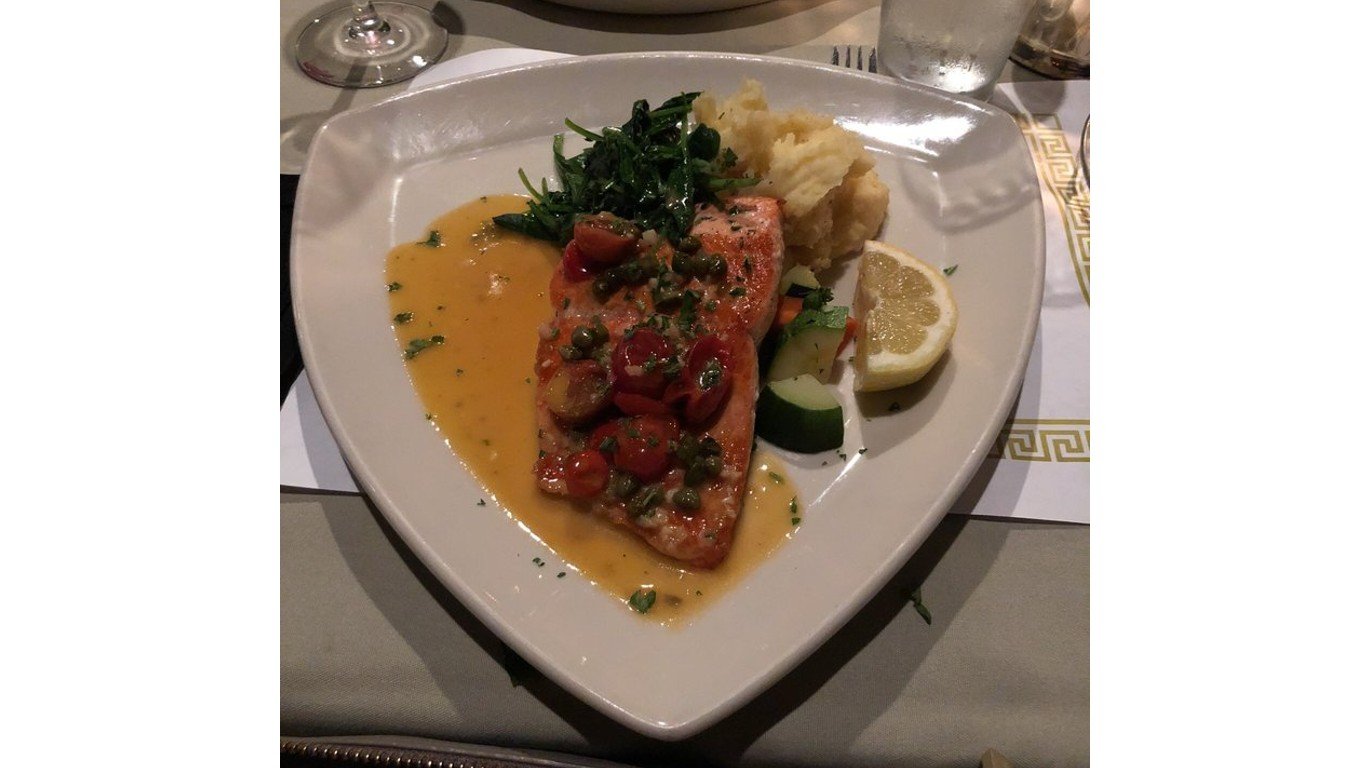
Angelo’s of Burien
> Location: Burien, Washington
Angelo Ricci, from Monti Lepini, south of Rome, opened an Italian deli with a few tables in this community south of the Seattle airport in 1957. Today his family runs an acclaimed restaurant on the site, serving a range of classic pastas, steaks, and veal and chicken dishes, as well as nightly specials like chicken cannelloni and seafood spaghetti.
[in-text-ad]
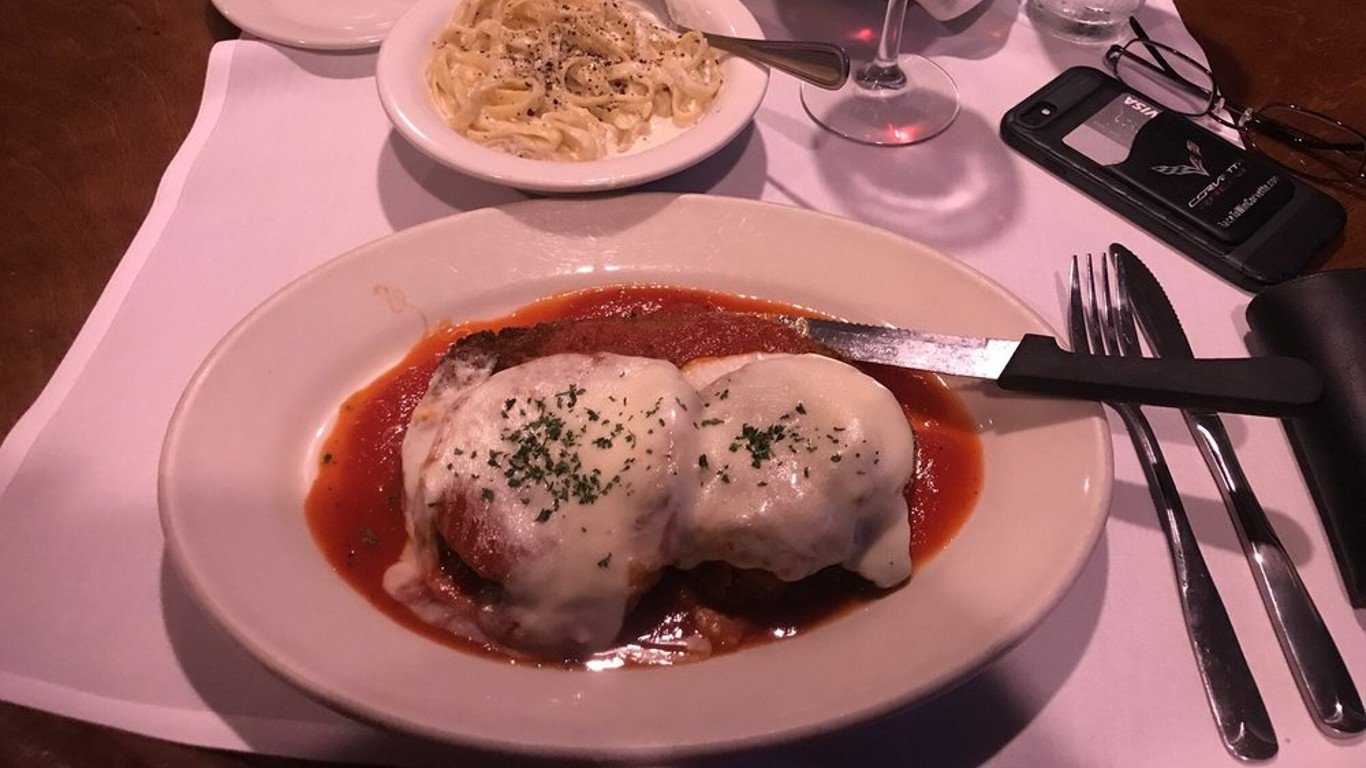
Anthony’s on Grand
> Location: Kansas City, Missouri
Anthony Spino’s mother ran a lunch place called The Soup House in this downtown favorite’s original building in the 1960s. In 1978, her son, Anthony Jr., and his wife expanded the structure and reopened it as Anthony’s Restaurant and Lounge. Today, as Anthony’s on Grand, it’s run by the couple’s sons, serving recipes handed down by their grandmother. Expect lasagna made daily, fried chicken on Sundays, and the house specialty dessert — cannoli.
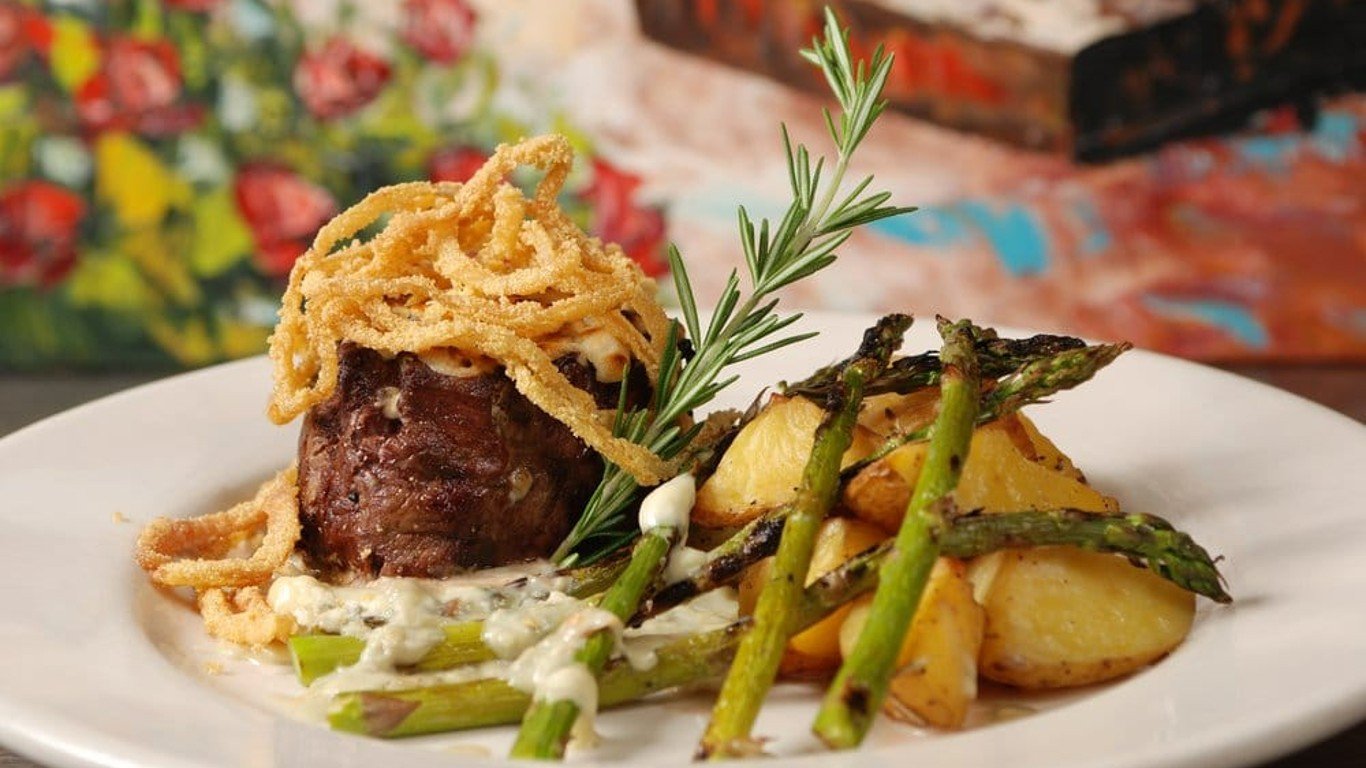
Arturo’s Ristorante
> Location: Boca Raton, Florida
Arturo Gismondi opened the original Arturo’s in Queens, New York, in 1957. His sons, Giuseppe and Vincenzo, took over in 1972. The family opened this Florida outpost in 1983, selling the Queens original eight years later and it has flourished ever since. Look for carpaccio, minestrone, spaghetti alla carbonara, zuppa di pesce, osso buco, and an assortment of homemade gelato on the menu.
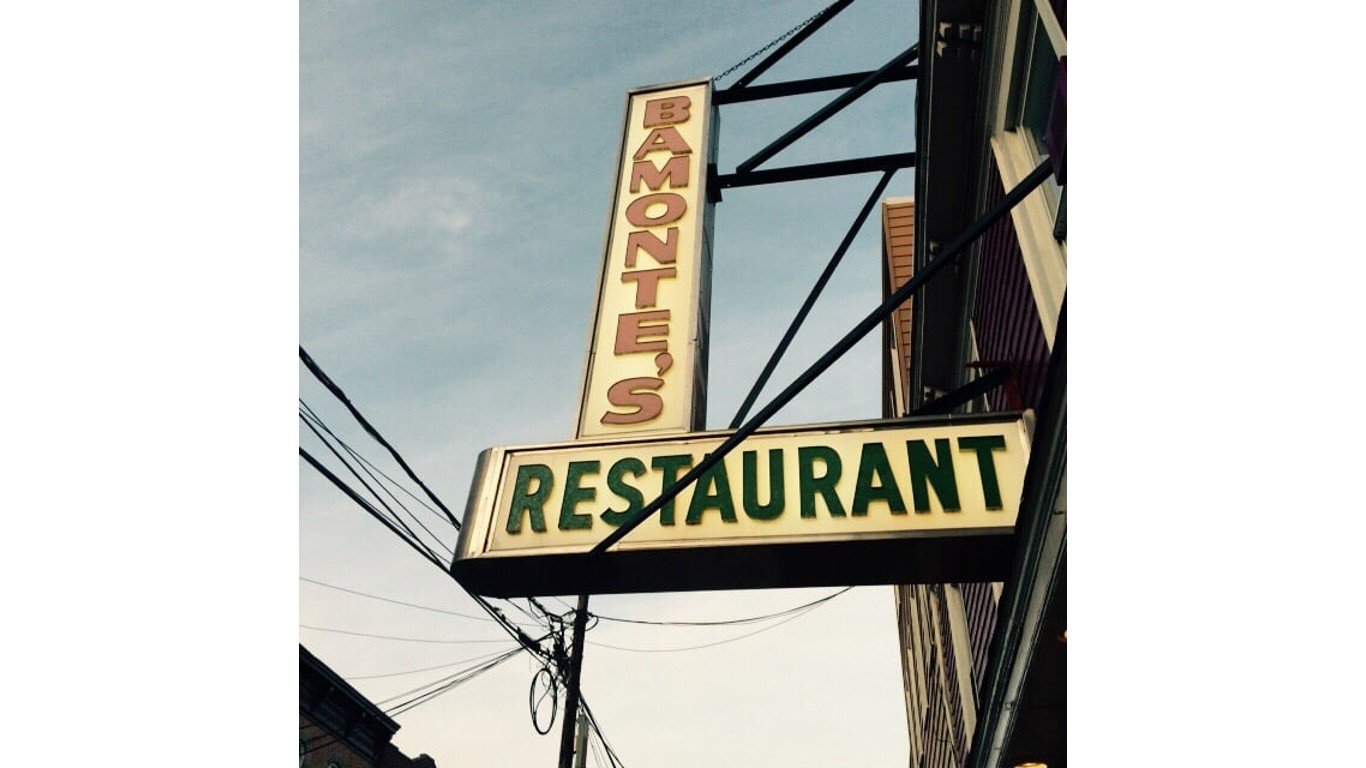
Bamonte’s
> Location: Brooklyn, New York
This Williamsburg standby was opened in 1900 by Pasquale Bamonte, a native of Salerno in Italy’s Campania region, and is quite possibly New York’s oldest Italian restaurant. The menu includes such old-style offerings as clams oreganata, fettuccine Alfredo, chicken cacciatore, and steak pizzaiola.
[in-text-ad-2]
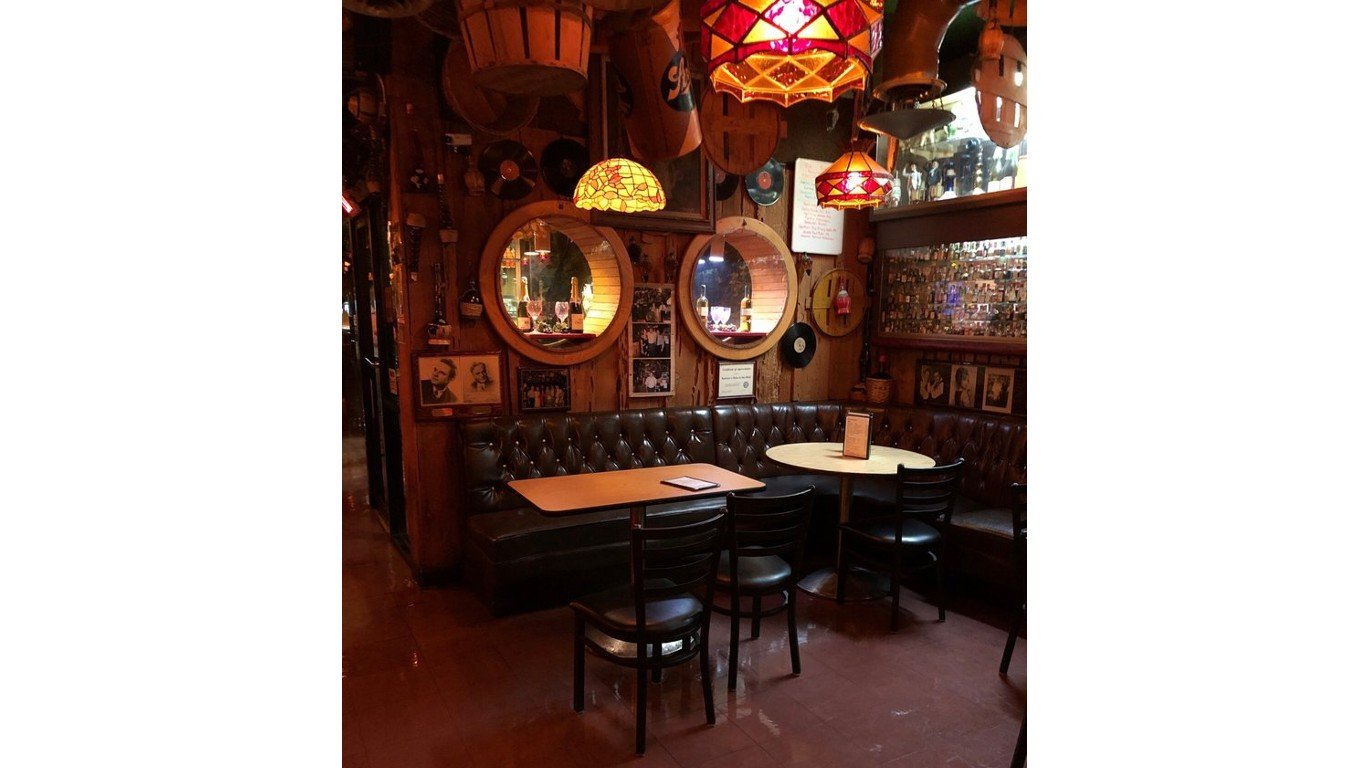
Battista’s Hole in the Wall
> Location: Las Vegas, Nevada
A far cry from the glitzy contemporary Italian restaurants in the hotel-casinos on the Strip, Battista’s is a red-leather-booth place attractively cluttered with Vegas memorabilia. The Little Italy-style menu includes things like minestrone, eggplant parmigiana, spaghetti with meatballs, and shrimp marinara. Free house wine is served with meals and there is a wandering accordion player.
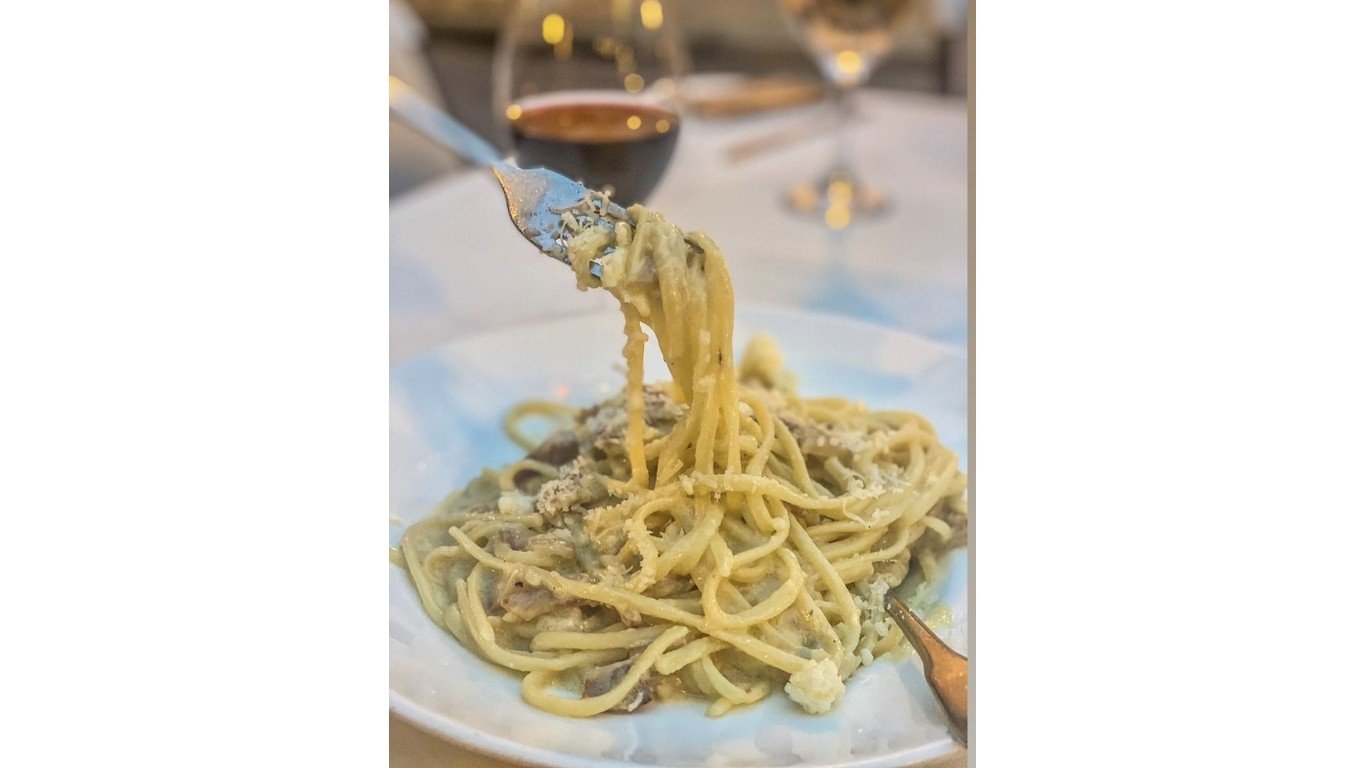
Bruna’s Ristorante
> Location: Chicago, Illinois
Bruna Cani opened her restaurant — today the third-oldest Italian place in the city — in 1933, selling it to fellow Tuscan Luciano Silvestri in 1981. Chicagoans come here for classic-style fried calamari, sausage and peppers, linguine with red or white clam sauce, veal scaloppine, and the restaurant’s famous tiramisù.
[in-text-ad]
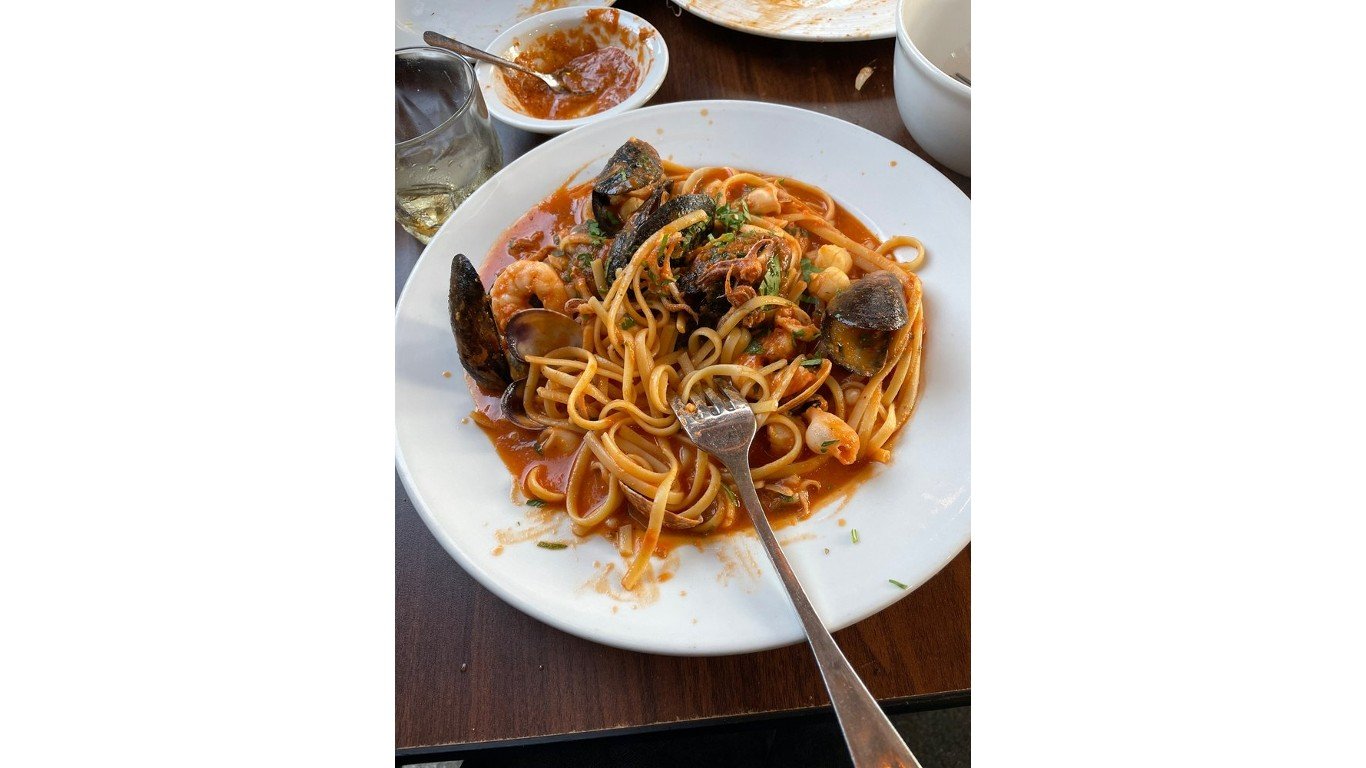
Caffè Sport
> Location: San Francisco, California
Sicilian-born Antonio La Tona set up this North Beach favorite as a social club and sandwich shop in 1969, converting it in the mid-1970s to a full-scale restaurant. The interior is unique, every inch seemingly covered with La Tona’s colorful paintings and wood carvings and with memorabilia contributed by fans around the world. The menu, on the other hand, is not unique (insalata caprese, carpaccio, penne with pesto, cioppino in both white and red variations), but does offer a few surprises, like Dungeness-crab-stuffed squid-ink ravioli and mango panna cotta.
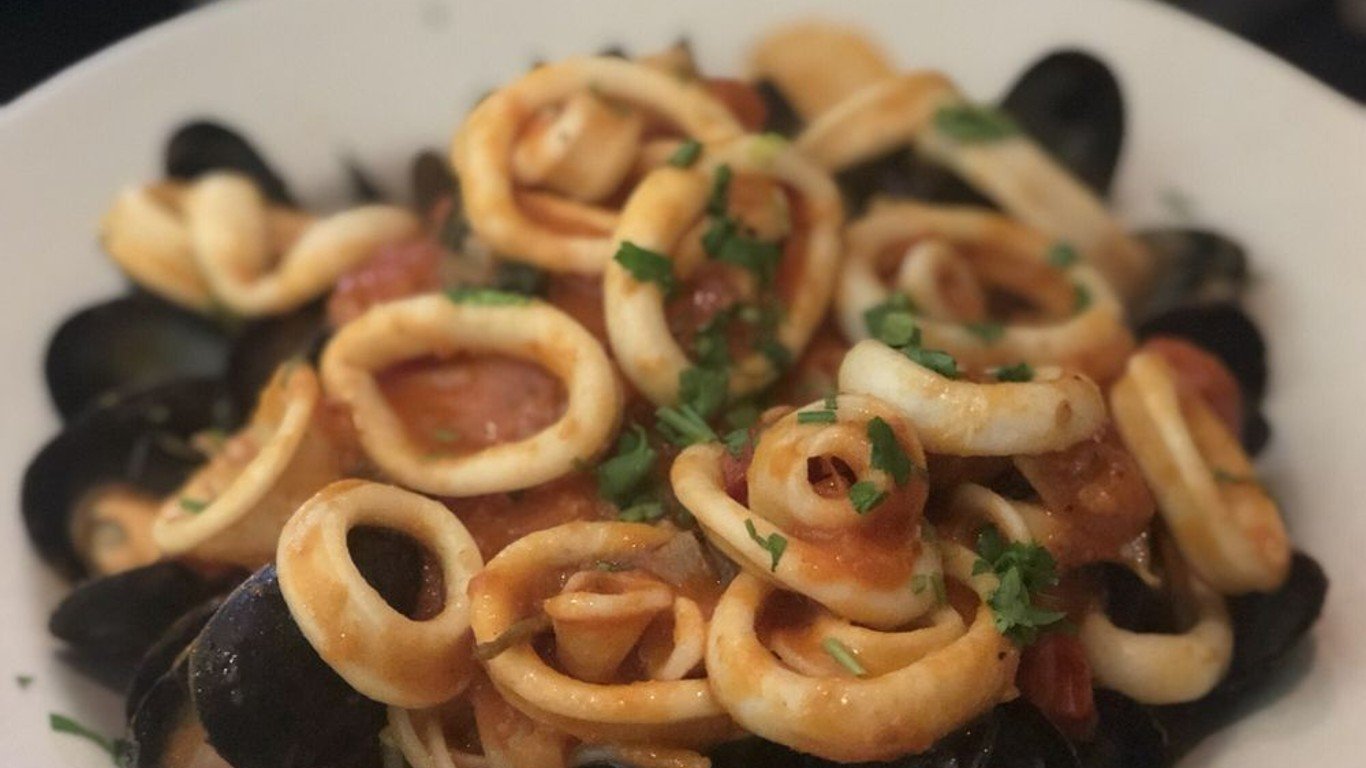
Carlo’s Cucina Italiana
> Location: Allston, Massachusetts
Carlo Barone and his family have been serving Italian-American fare in the Boston neighborhood of Allston — some miles east of the city’s best-known Italian quarter, the North End — since the 1970s, with the Boston Globe citing it as one of the city’s ten most underrated restaurants. Caesar salad, penne with chicken and broccoli, veal marsala, and a Carlo’s creation of fried shrimp in Grand Marnier sauce are among the items crowding the tables here.

Charlie Gitto’s on the Hill
> Location: St. Louis, Missouri
Charlie Gitto’s, opened in 1981 in the St. Louis Italian quarter (“The Hill”), has a connection to the city’s most famous contribution to the Italian-American menu: fried ravioli. Back in 1947, when a restaurant called Angelo’s was on the site, a chef accidentally dropped ravioli into hot oil instead of boiling water — and a local classic was born. Served with tomato sauce, it leads off the menu here. Among the many other choices are rigatoni with sausage, ricotta-stuffed manicotti, four brick-oven pizzas, and a bone-in veal milanese.
[in-text-ad-2]

Christo’s Ristorante
> Location: Phoenix, Arizona
It may have been opened, in 1987, by a Greek — Christo Panagiotakopoulos — and have been under the ownership of another one — Michael Zistatsis — since 2017, but the fare here (apart from a Greek salad and the occasional appearance of feta cheese) is strictly old-line Italian. That means, shrimp scampi, grilled sausage and peppers, stuffed manicotti, linguine with clams, cioppino, veal pizzaiola, and the like.
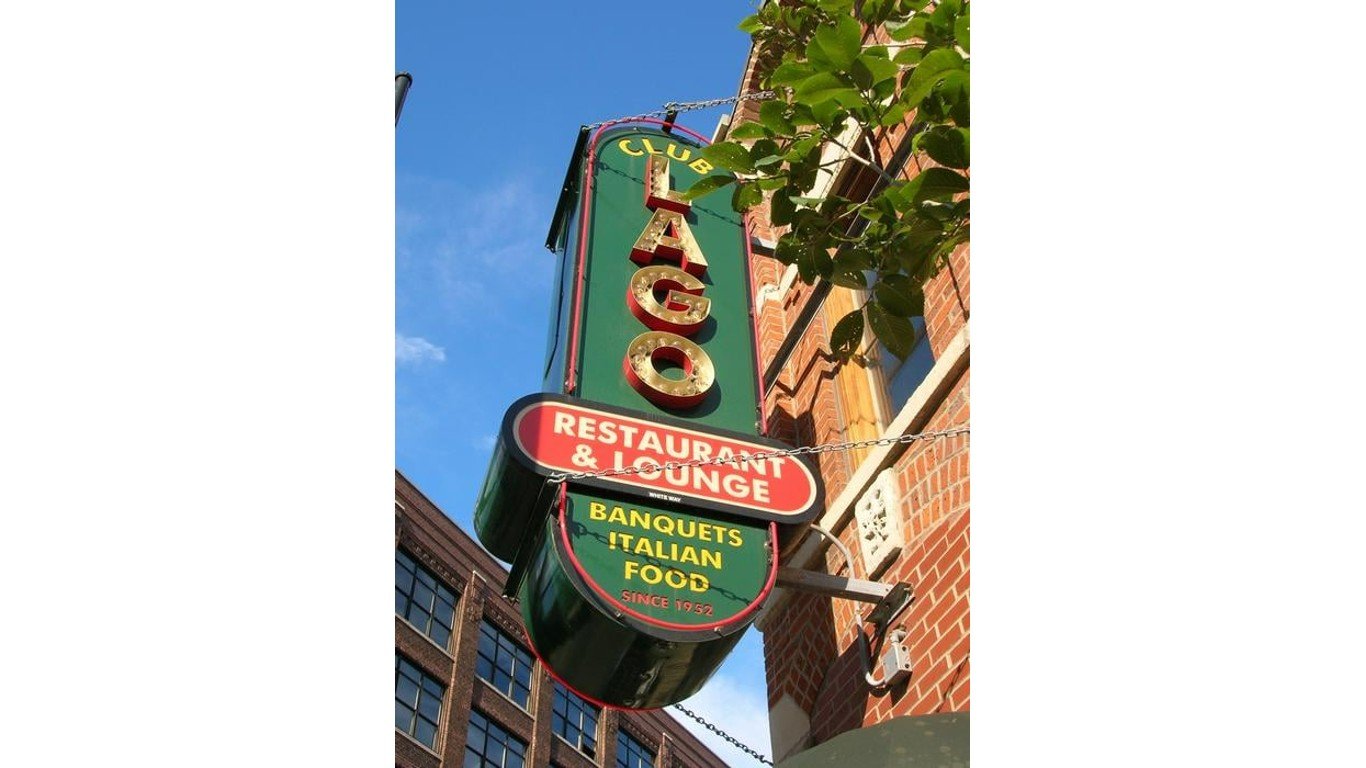
Club Lago
> Location: Chicago, Illinois
Gus and Ida Lazzerini opened Club Lago in 1952. Their son-in-law, Francesco Nardini, took over in 1980, and his sons, GianCarlo and Guido, run it today. While the place was severely damaged by a boiler explosion next door in 2009, it was refurbished in the old style, complete with red-and-white checked tablecloths. Come here for things like pizza bread with sausage, green noodles al forno, chicken Vesuvio, veal piccante, and Italian lemon ice.
[in-text-ad]
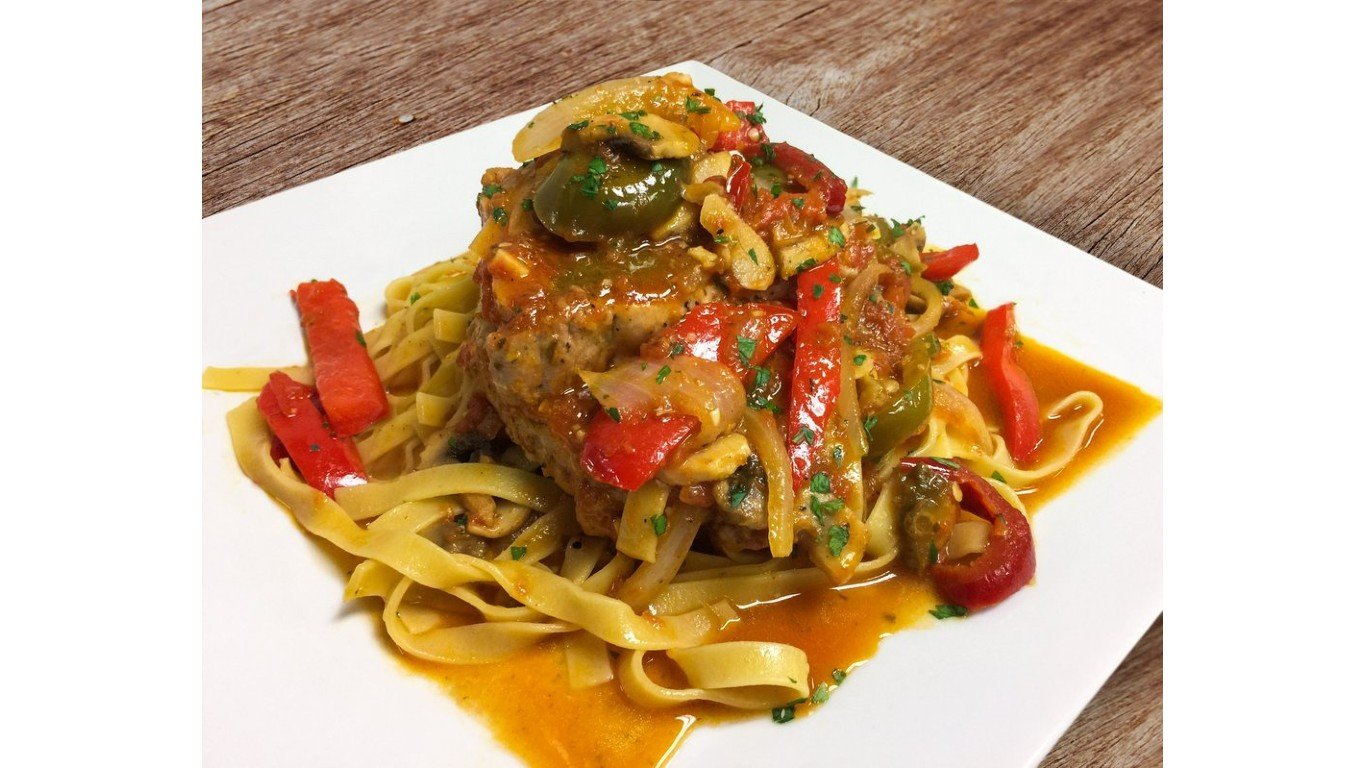
Consiglio’s
> Location: New Haven, Connecticut
New Haven’s most famous Italian dish is pizza. Just down the street from two of the city’s iconic pizzerias, Frank Pepe’s and Sally’s, this old-school Italian place eschews pizza in favor of such things as fried mozzarella, pappardelle bolognese, homemade three-cheese ravioli, linguine with Rhode Island littleneck clams, and spicy chicken gorgonzola. Opened in 1938 by Annunziata and Salvatore Consiglio, it is run by their grandchildren today.
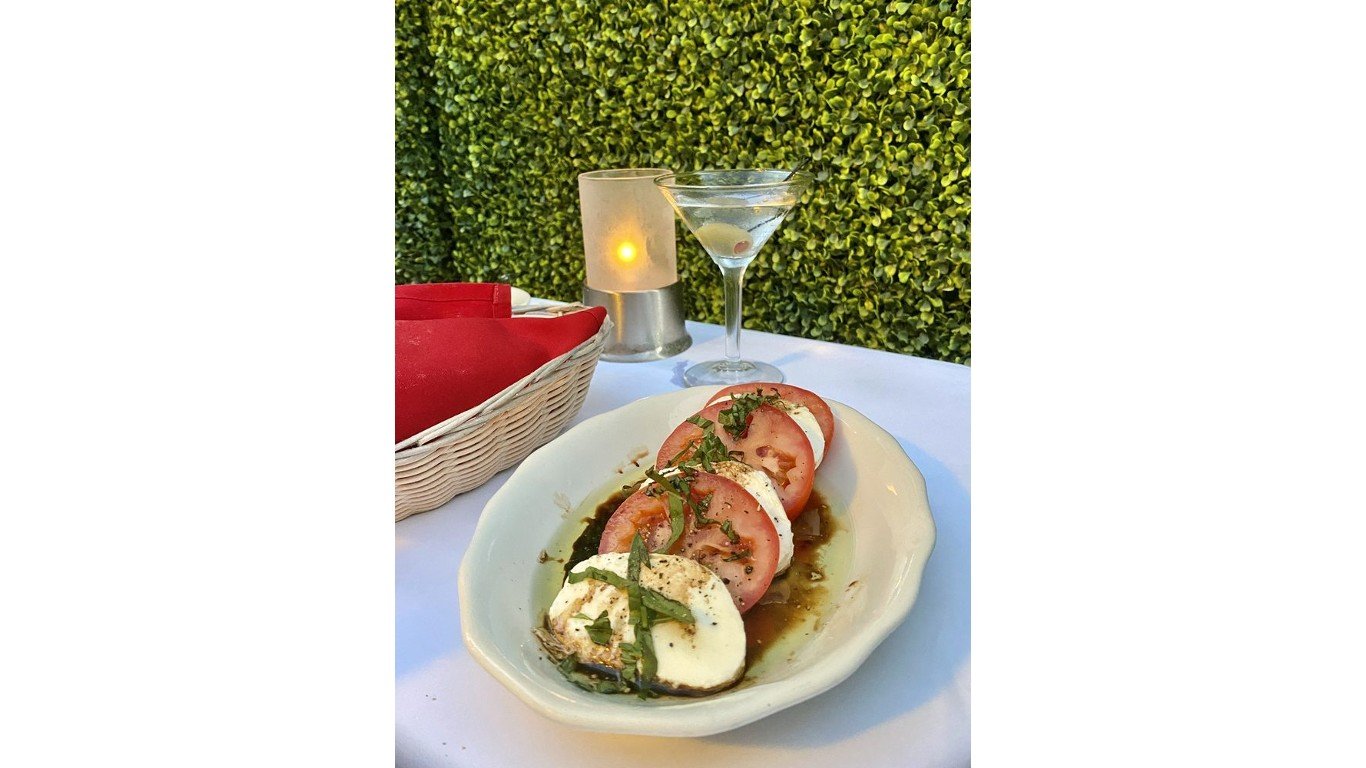
Dan Tana’s
> Location: West Hollywood, California
Opened by the eponymous Tana, a professional soccer player and aspiring actor from Belgrade, in 1964, this hanging-Chianti-bottle restaurant grew into one of L.A.’s premiere celebrity hangouts. From Fred Astaire to Leonardo DiCaprio, Jerry West to Joni Mitchell, everybody seems to have come through the doors at some point. Many of the dishes are named for regulars, many of them behind-the-scenes Hollywood types. The food is exactly what the decor would lead you to expect: mozzarella marinara, penne arrabbiata, shrimp scampi, veal parmigiana, zabaglione. All entrees are served, old-school style, with a side of spaghetti.
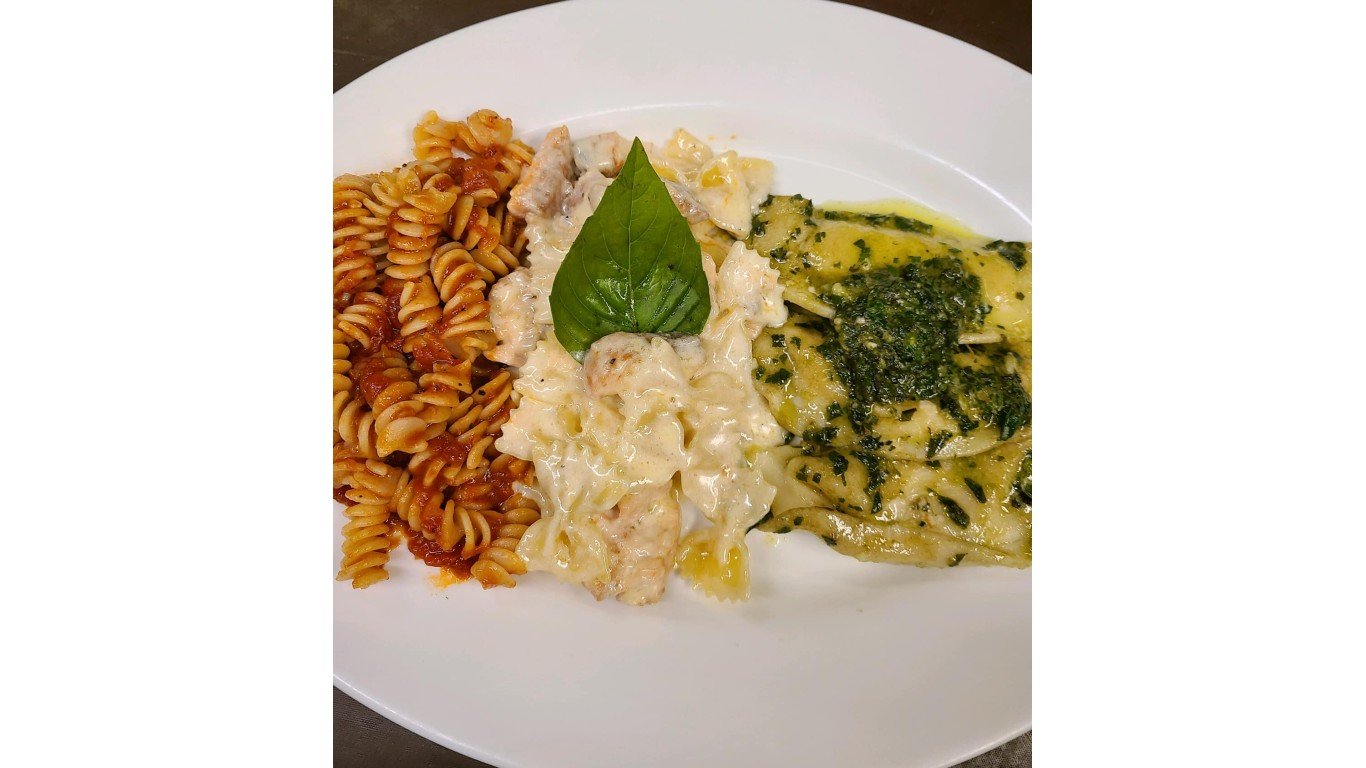
Dante & Luigi’s Corona di Ferro
> Location: Philadelphia, Pennsylvania
One of the oldest Italian restaurants in America, Dante & Luigi’s was opened in 1899 under the name Corona di Ferro (Iron Crown) by an Italian immigrant named Michael DiRocco. (The name honored the Italian king.) Michael’s sons, Dante and Luigi, took the place over in the 1930s and their name became attached. The family ran it until 1996, when local Sicilian-born builder Michael LaRussa and his wife bought the place. The menu is classic — an antipasto plate, eggplant rollatini, a choice of pastas with the house special Italian “gravy,” osso buco, hand-dipped spumoni, and the like.
[in-text-ad-2]
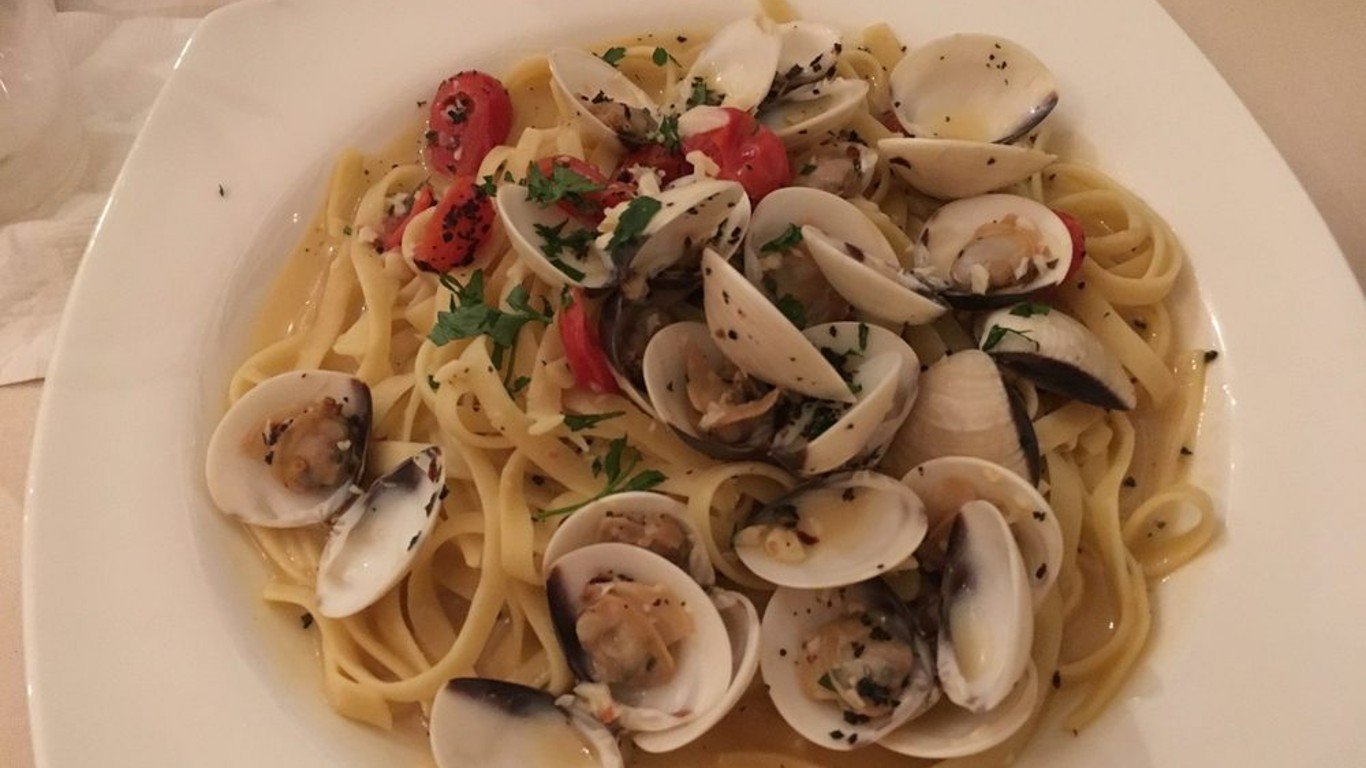
Ermilio’s Italian Home Cooking
> Location: Eureka Springs, Arkansas
The parents of Paul Wilson, owner of Ermilio’s, were Italian immigrants who ended up in this Ozark town in northwestern Arkansas, known for its mineral springs and its Victorian architecture. Wilson opened Ermilio’s in the early 1990s in a Victorian cottage, in fact. The food is based on old family recipes, and includes things like sautéed artichoke hearts, a choice of eight pastas with such accompaniments as gorgonzola cheese sauce or “mom’s homemade meatballs in red sauce,” chicken marsala, and pan-roasted pork chop with porcini mushroom glaze.
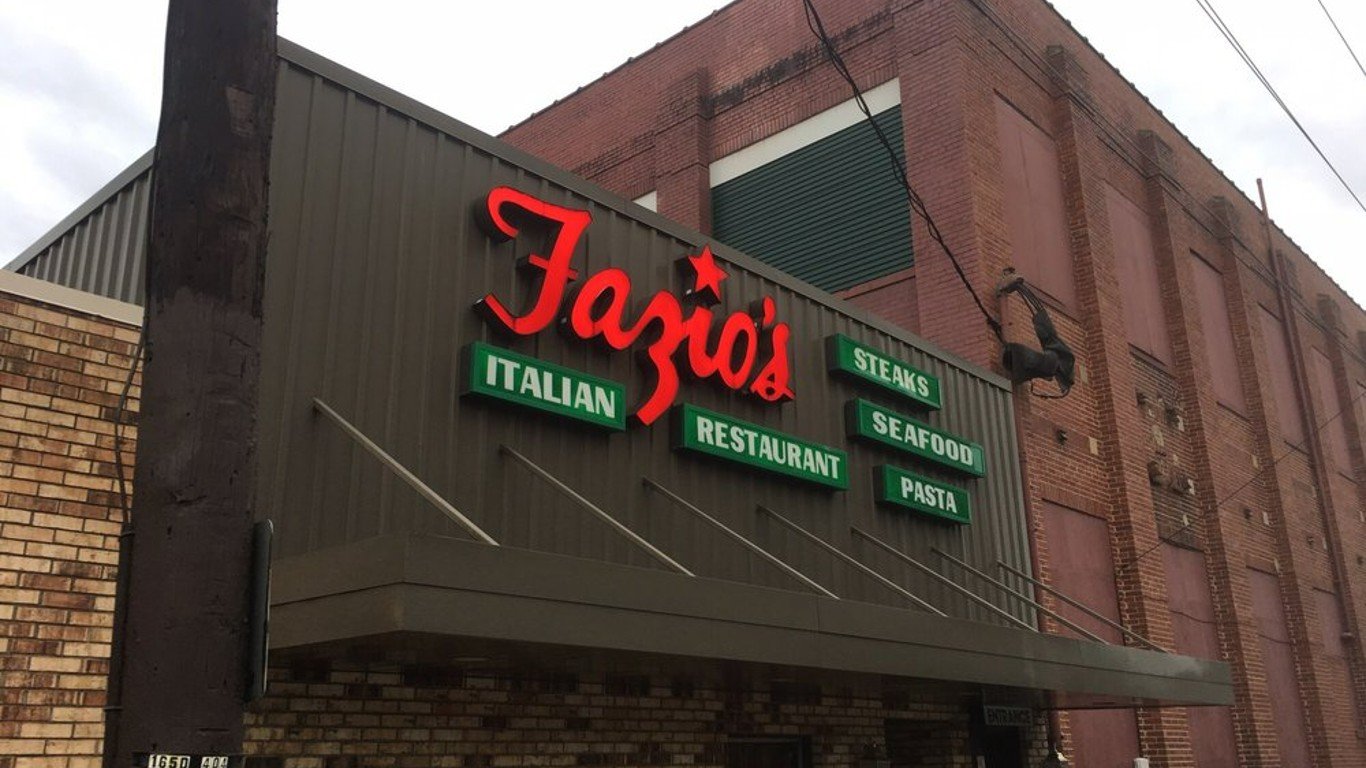
Fazio’s
> Location: Charleston, West Virginia
Danny Fazio’s grandparents owned the land where the restaurant stands today, and opened a small restaurant there in the mid-1940s. Danny’s father, Joe, took it over a few years later and expanded it gradually. Joe died in 2017 and his son is now in charge. The food ranges from Caesar salad to casserole-baked baked spaghetti, from assorted pizzas to Italian pepper steak, with some non-Italian outliers like jalapeño poppers and fried chicken.
[in-text-ad]
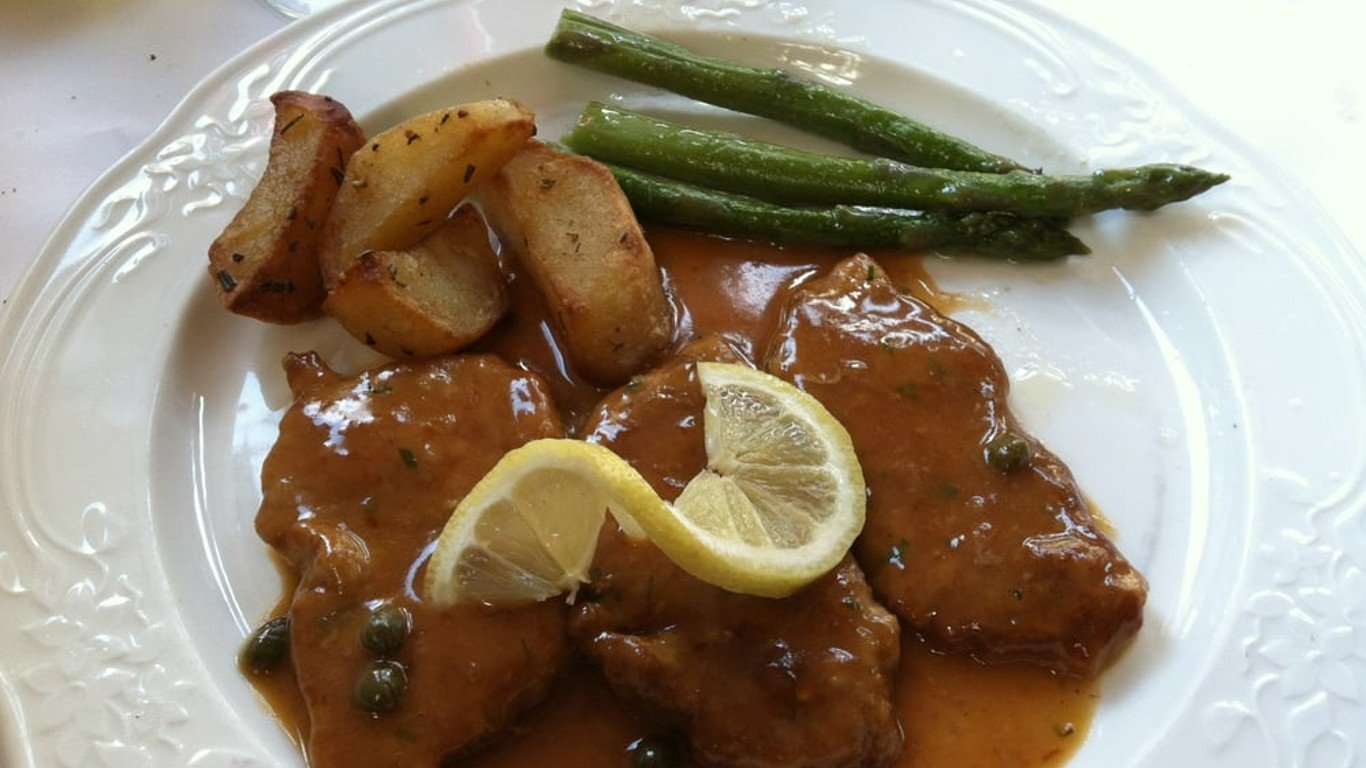
Fior d’Italia
> Location: San Francisco, California
This historic San Francisco restaurant dates back to 1886, when it was opened in North Beach by an unsuccessful Gold Rush prospector from Italy named Angelo Del Monte. Another immigrant, Armido Marianetti, joined him in 1890 and the two built the place into a successful business that has occupied six or seven different locations over the years. In its current spot, it was bought by Milan-born Gianni Audieri and his wife in 2012. The menu offers both home-style and upscale fare, including pancetta-wrapped prawns, pasta e fagioli, tagliatelle alla bolognese, risotto alla milanese, and bistecca alla fiorentina.
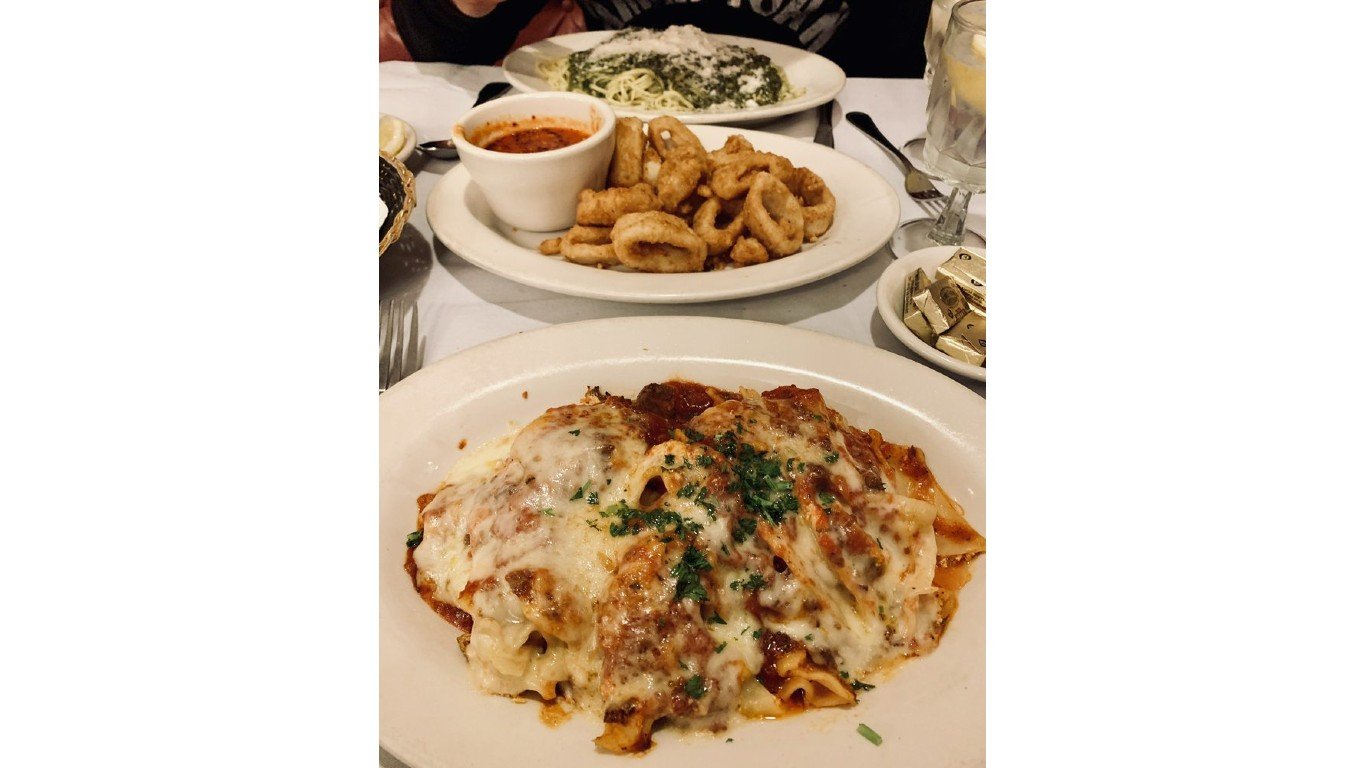
Forlini’s
> Location: New York City, New York
The Forlini family, in the restaurant business since 1943, opened this classic old-school place in 1956 in what was then Little Italy but has now become part of Chinatown. The menu is huge and full of all the usual Italian-American dishes, including numerous homemade pastas. The best deal, though, is the $52 “Gourmet Dinner,” including a hot antipasto assortment, an assortment of three pastas, a combination plate of stuffed shrimp, veal scaloppine, and chicken marsala with fried zucchini, and a choice of desserts.
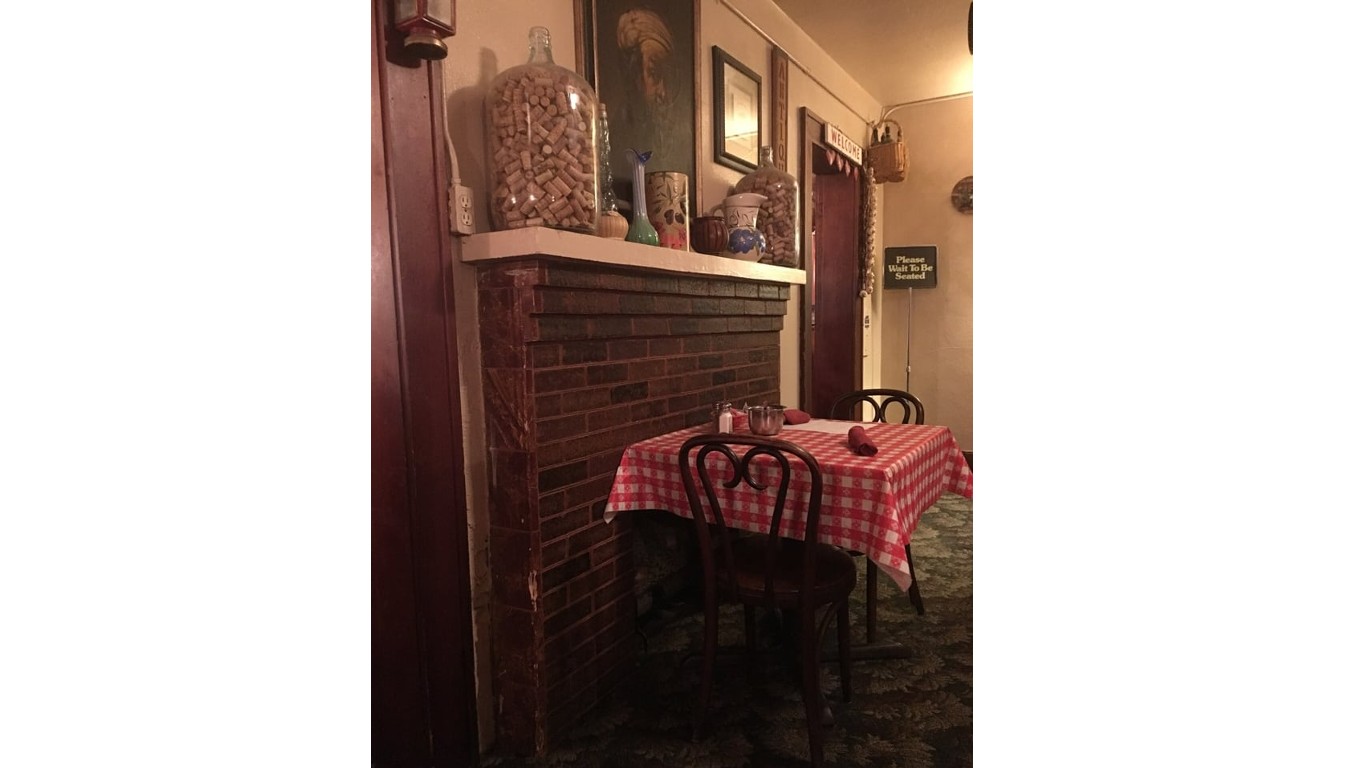
Frank’s Spaghetti House
> Location: Corpus Christi, Texas
Sicilian-born Frank Toeross (original name: Torregrossa) opened this place with his wife in 1948 after he was discharged from the Navy. The couple retired and sold out in 1973, and the new owner in turn sold it eight years later to Sue Finley Moody, whose family runs it to this day.
Spaghetti with a choice of sauces is of course featured, but there are also sandwiches (at lunchtime), pizzas, other pastas, fried calamari and other appetizers, and a few main dishes.
[in-text-ad-2]

Gaetano’s
> Location: Denver, Colorado
“Eccellente Cucina & Cocktails” promises the sign outside this 1947-vintage Denver legend, opened by the Smaldone brothers — members of what was once the city’s most prominent Italian crime family. It remained family-owned until it was purchased in 2005 by the Wynkoop-Breckenridge group, owners of The Cherry Cricket, Wynkoop Brewing Company, and other local establishments. Steamed mussels, chopped salad, a couple of pizzas, stuffed shells, and prosciutto-wrapped chicken are among the dishes served.

Gene’s
> Location: New York City, New York
A Greenwich Village institution dating from 1919, Gene’s was bought in 1979 by Spaniard Albino Ramirez, a former waiter, whose family still runs it. While it bills itself as offering “Continental Cuisine of Distinction,” the menu leans heavily Italian, with such fare as melon and prosciutto, stracciatella, penne alla vodka, shrimp Fra Diavolo, and veal saltimbocca.
[in-text-ad]
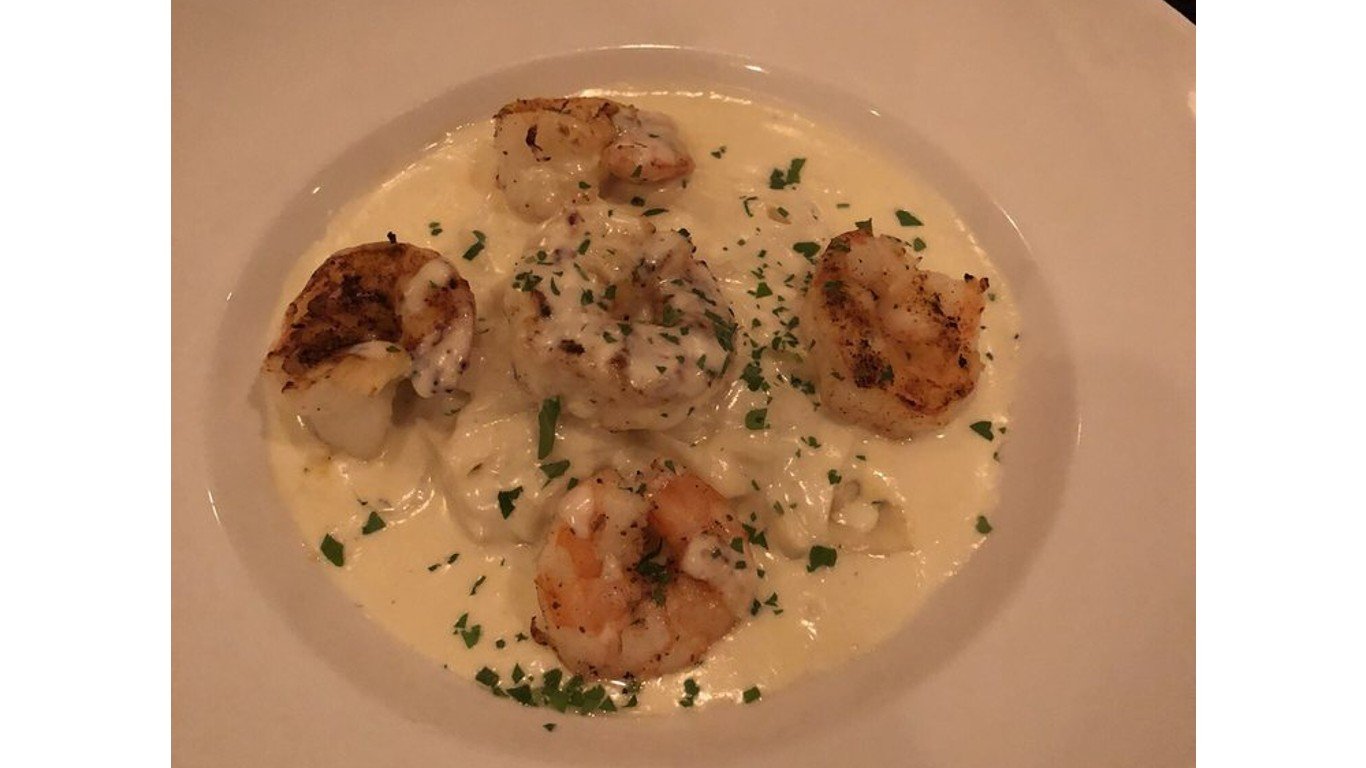
Giovanni’s
> Location: Detroit, Michigan
Giovanni Cannarsa came to the U.S. from Molise in 1913, settling in Detroit to work for the Ford Motor Company. Fast-forward to 1968, when his wife, Rose, opened Giovanni’s as a take-out pizzeria. Their daughter, Frances, began working there and started making changes, eventually transforming the pizzeria into its present form. Sausage and peppers, a choice of pastas with tomato or meat sauce (among other things), scampi alla Giovanni, and veal piccata are among the dishes on the bill of fare.
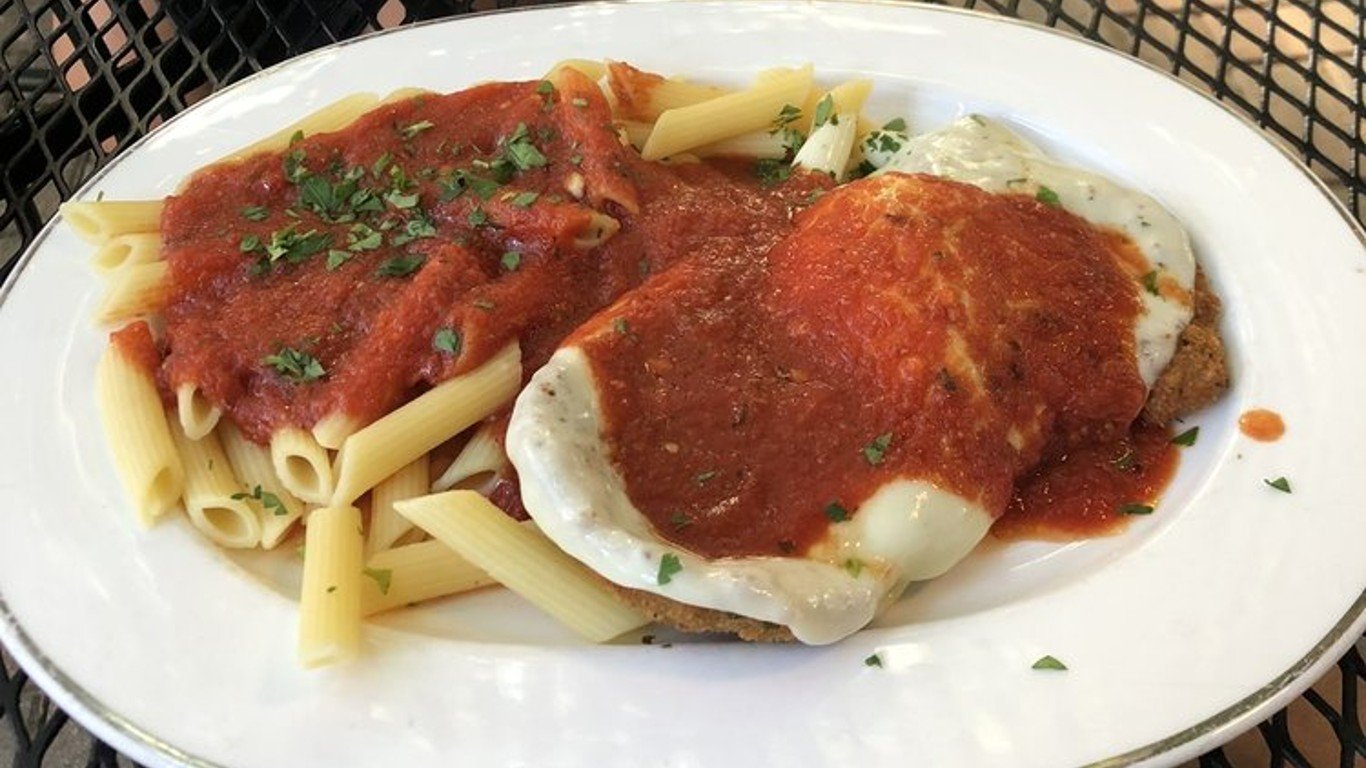
Guarino’s
> Location: Cleveland, Ohio
Said to be Cleveland’s oldest restaurant of any kind, Guarino’s dates its history from 1898, when Sicilian immigrant Vincenzo Guarino bought a pool room and tavern on the site. After he got married in 1918, his wife started cooking Italian dinners, and the place was reborn as a restaurant. Vincenzo’s son, Sam, took over the business in 1954, in turn passing it along to a family friend, Nancy Phillips. Her children and grandchildren have kept it going ever since, serving such things as artichoke and eggplant salad, spaghetti and meatballs, fettuccine Alfredo, chicken parmigiana, and a couple of pizzas.
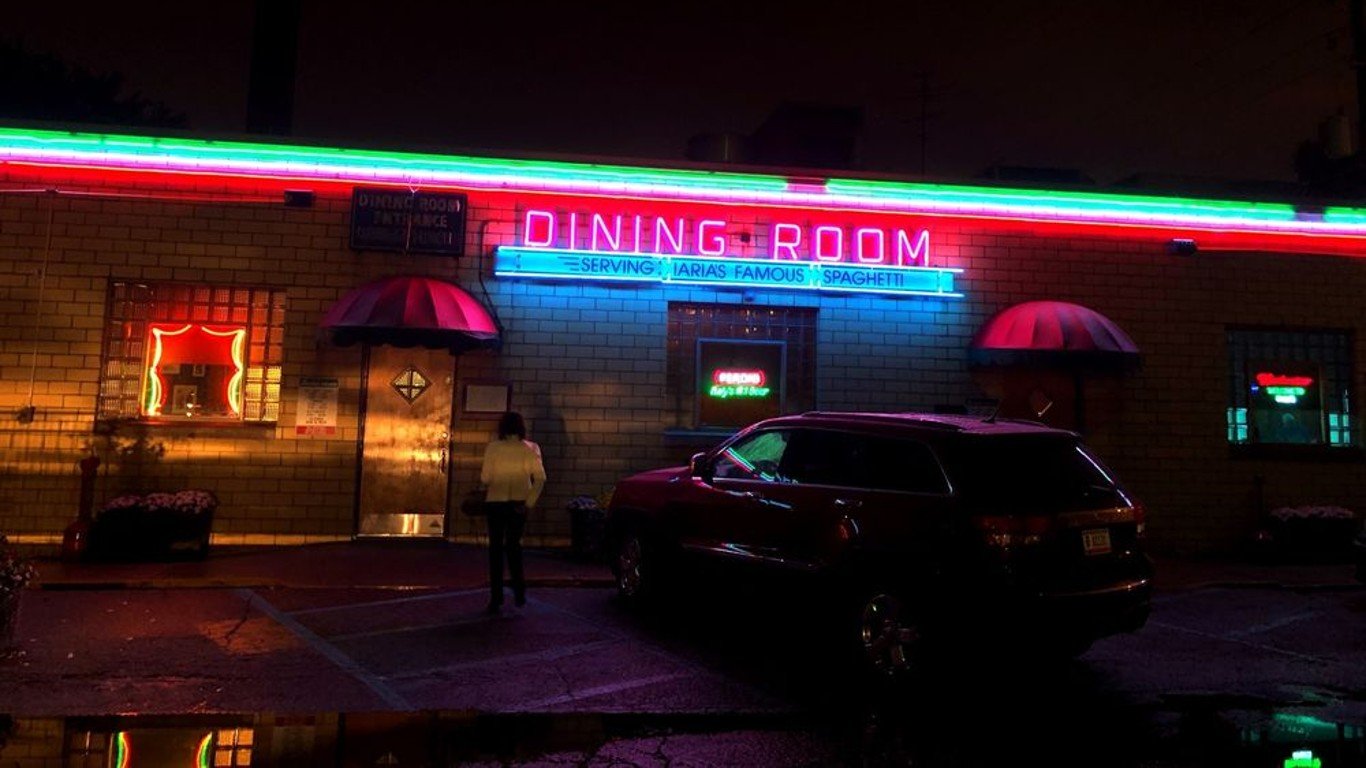
Iaria’s
> Location: Indianapolis, Indiana
“Eat your spaghetti,” counsels this Indianapolis standby, opened by Pete and Antonia Iaria in 1933. Their son and grandson subsequently ran it before ceding ownership after a legal dispute to the latter’s niece and nephews, who operate it to this day. In addition to their “famous spaghetti” with meatballs or Italian sausage, there’s a full range of pasta dishes (including St. Louis-style fried ravioli), a selection of pizzas, and desserts including a limoncello cake.
[in-text-ad-2]
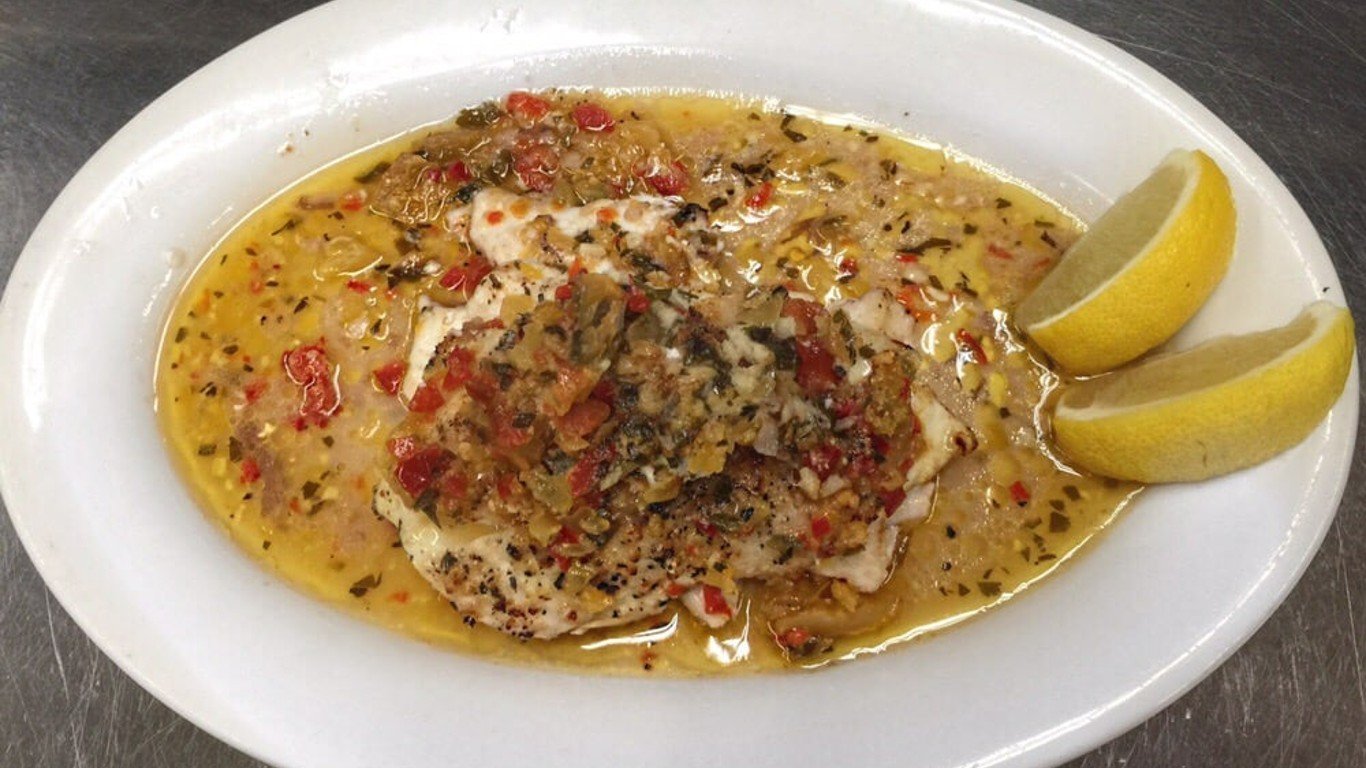
Joe Marzilli’s Old Canteen
> Location: Providence, Rhode Island
The eponymous Marzilli opened his restaurant in 1956. His son, Sal, follows his recipes today, serving polenta with marinara sauce, stuffed squid, shrimp scampi over linguine, beef braciole, Italian-style meatloaf, and more in a pink-walled dining room staffed by tuxedo-clad servers.
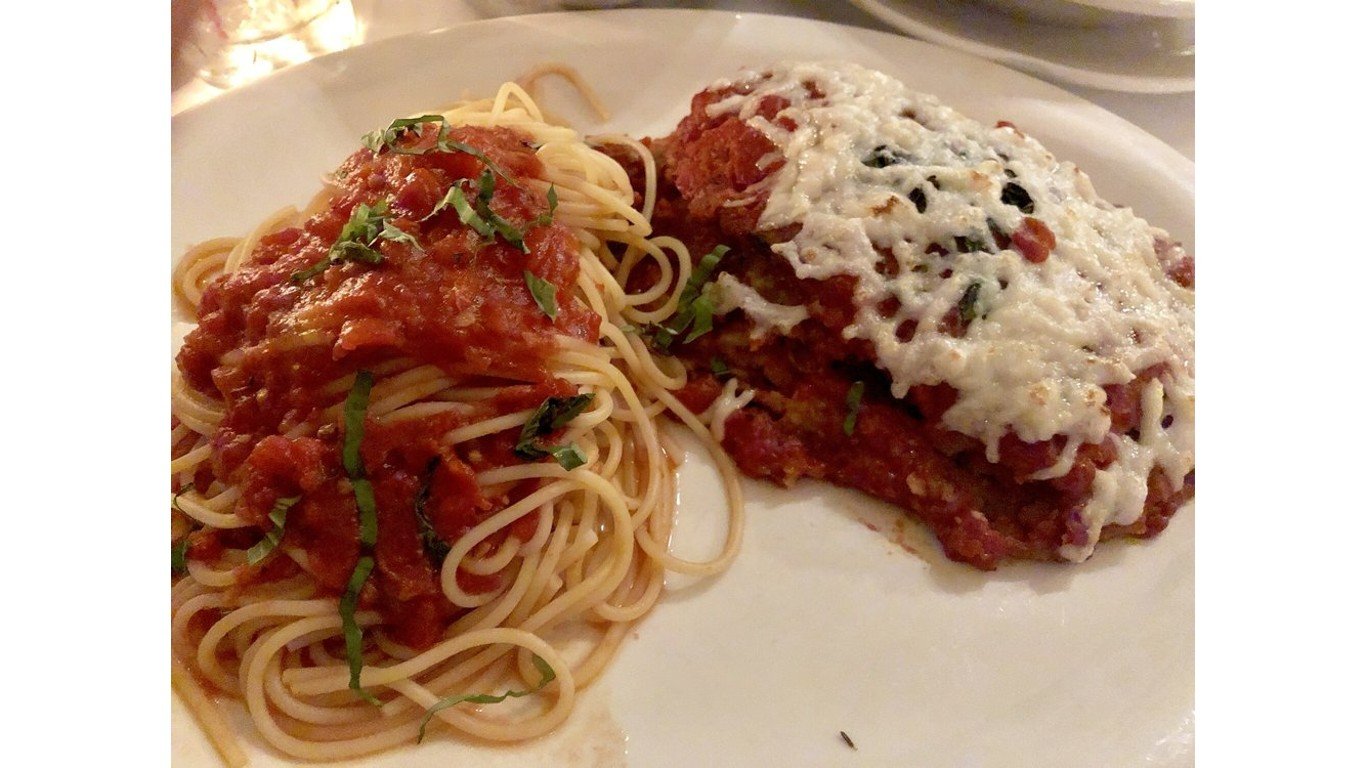
John’s of 12th Street
> Location: New York City, New York
Not to be confused with nearby John’s of Bleecker Street, this John’s was founded in Manhattan’s East Village in 1908 by John Pucciatti, an immigrant from Umbria. Several groups of owners have run the place since then, but the atmosphere and the menu have remained much the same (though pizza is a fairly recent addition). Sample dishes include roasted peppers with anchovies, various pastas with marinara or meat sauce, eggplant parmigiana, and pollo mimosa (chicken with prosciutto and mozzarella).
[in-text-ad]
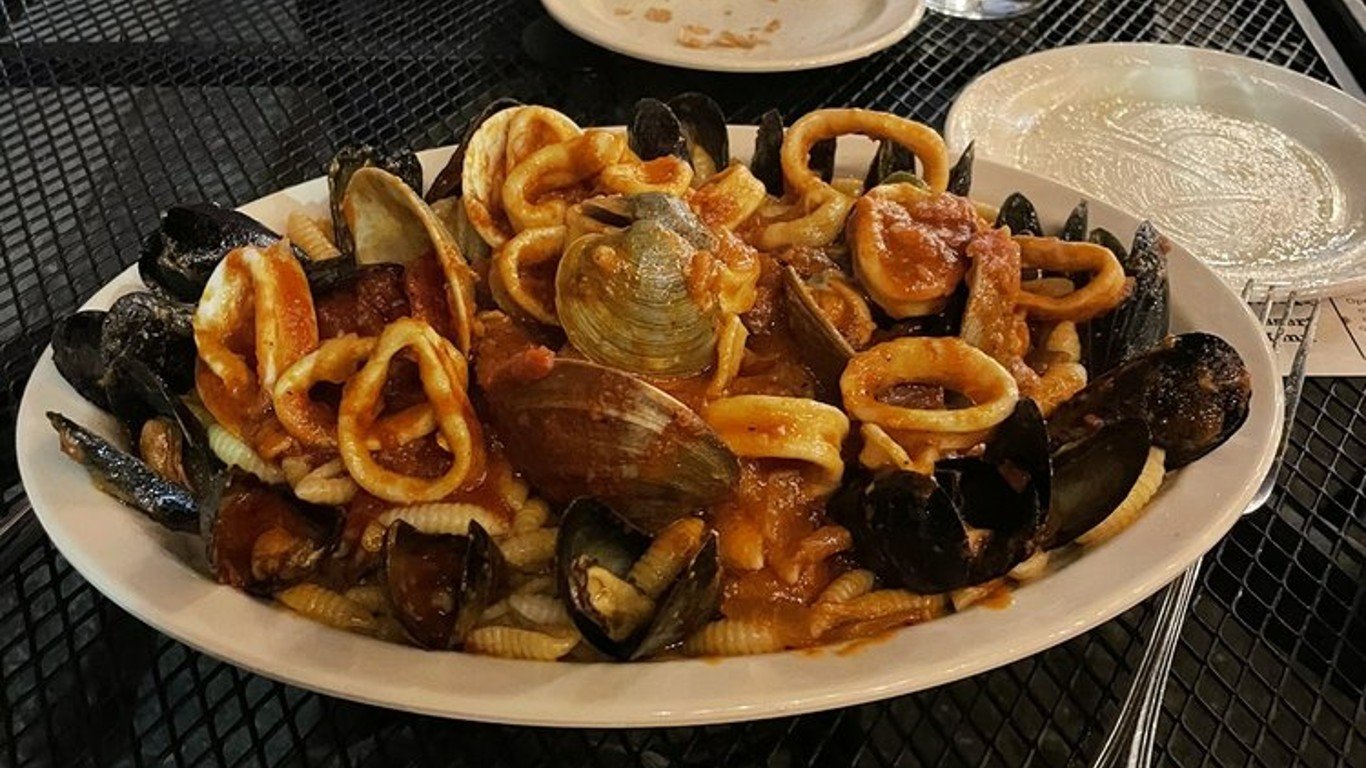
La Famiglia Giorgio’s
> Location: Boston, Massachusetts
A comparative newcomer to Boston’s North End, this popular establishment was opened by Al and Maryann Giorgio in 1990. With their children and grandchildren now involved in the business, the place serves what they describe as “hearty family portions from the heart of Rome.” Twelve different pastas with a choice of more than 20 sauces and accompaniments (by no means all of them Roman) are a feature of the menu. Shrimp puttanesca, chicken florentine, veal marsala, and steak pizzaiola are among the other possibilities.
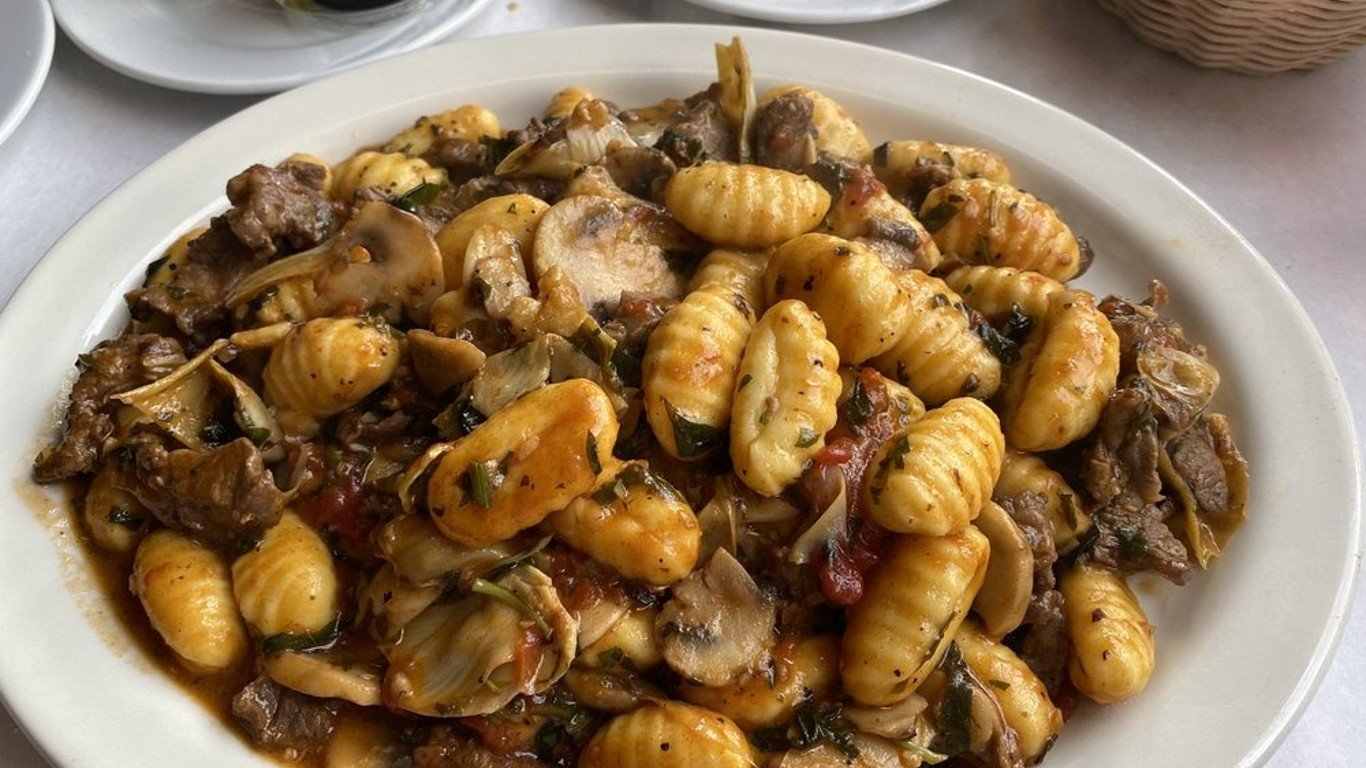
La Scarola
> Location: Chicago, Illinois
Pasta e fagioli touted as “the best in Chicago,” escarole (scarola in Italian) with beans, risotto primavera, baked cheese ravioli, and steak Vesuvio are typical menu items at this intimate 23-year-old restaurant owned by Armando Vasquez and Joey Mondelli. Vasquez has developed a reputation as one of the city’s most engaging dining room hosts.
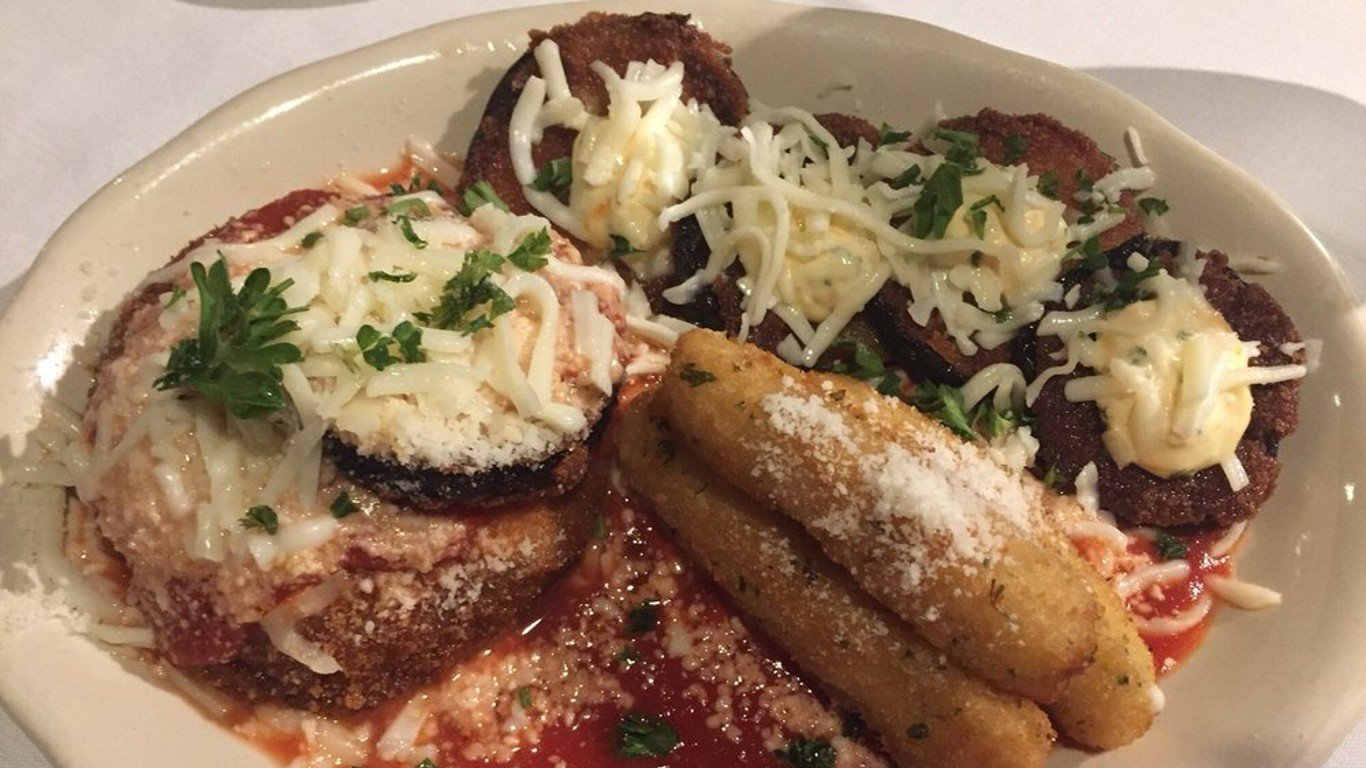
The L’Italiano Restaurant
> Location: Bossier City, Louisiana
The Giacalone brothers from Sicily — Nino, Rico, and Claudio — opened this restaurant in Bossier City, across the Red River from Shreveport, in 1984, and their family is still in charge. Fried zucchini, sautéed snails with garlic and pesto, tortellini with meat sauce, shrimp fiorentina, and veal marsala with mushrooms are among the dishes offered.
[in-text-ad-2]
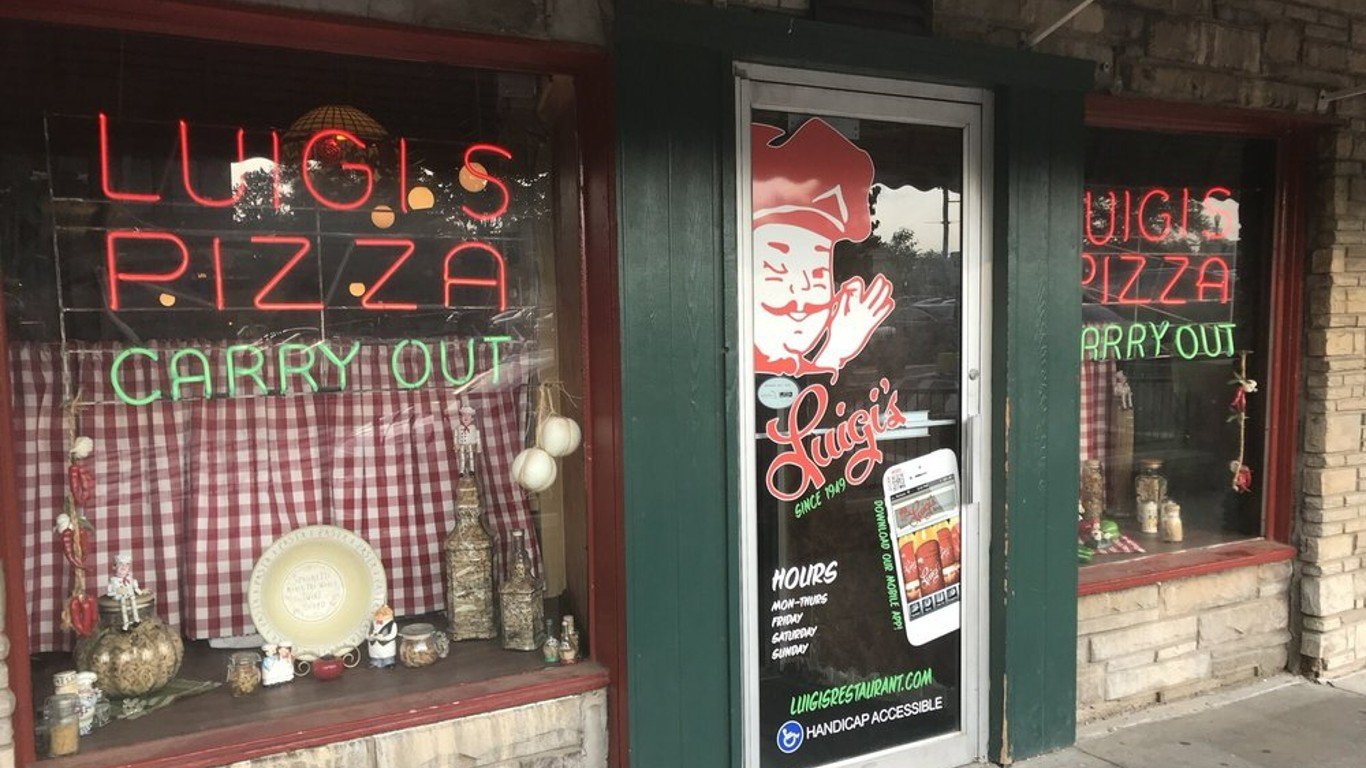
Luigi’s
> Location: Akron, Ohio
Homemade lasagna, spaghetti 10 ways, homemade Italian sausage, fried shrimp, a selection of Italian-style sandwiches, and an assortment of pizzas are among the things listed on the Luigi’s menu. The place was born in 1949, when Nick Ciriello and his wife, Rose, bought a former steakhouse on Main Street here. Their grandson, Tony, is now in charge. Luigi’s is so old-school that it doesn’t take credit cards, but there is an ATM machine handy.

Mamma Susanna’s Ristorante Italiano
> Location: Sacramento, California
Though dating only from 2004 and under the ownership of former employee Michelle Gully for just six years, Mamma Susanna’s has a genuine old-style feel, complete with red-and-white-checked tablecloths and a menu featuring such fare as steamed clams, stracciatella, lasagna bolognese, chicken or veal with gorgonzola cream sauce, and a choice of a dozen pizzas.
[in-text-ad]
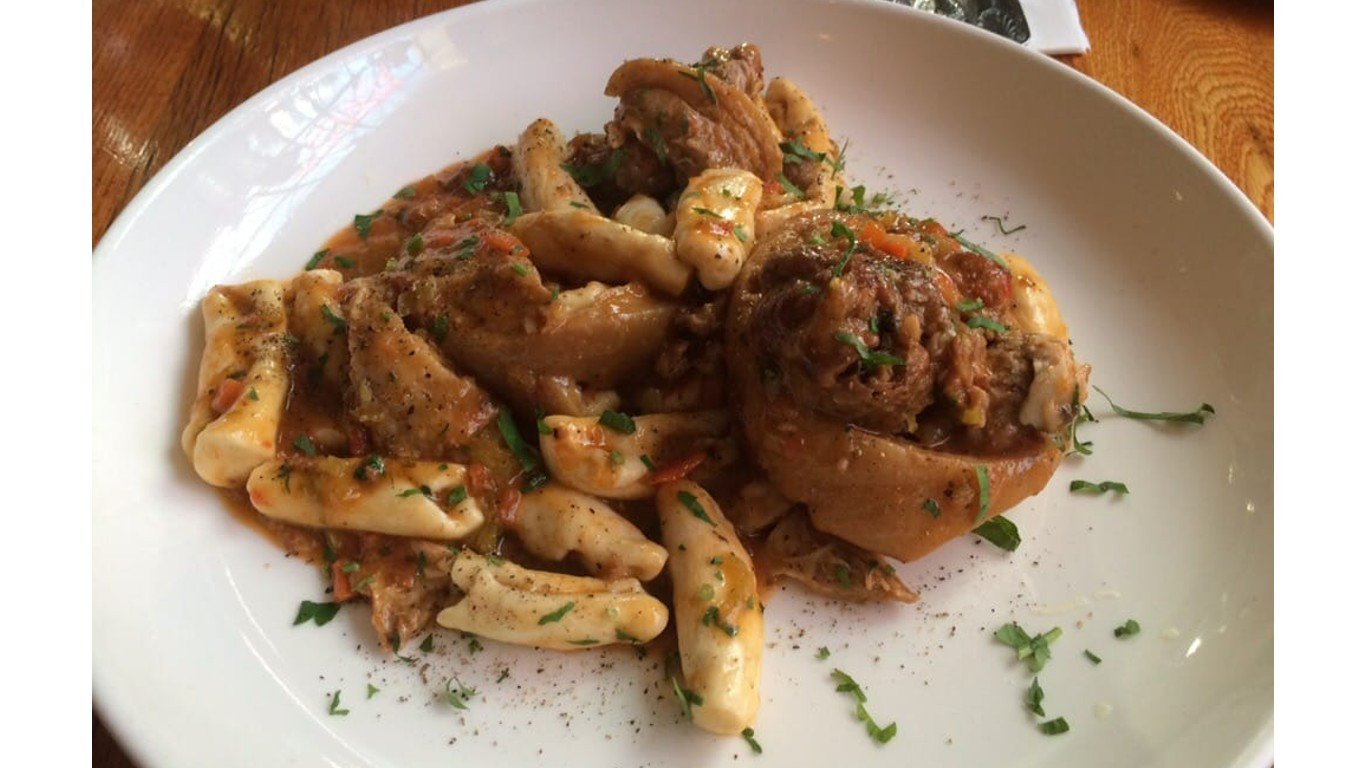
Manducatis
> Location: Queens, New York
A Queens favorite, Manducatis was opened on Christmas Day, 1977, by Vincenzo and Ida Cerbone. The “old country Italian food” they promise encompasses scungilli salad, capellini with shrimp and peas, homemade spaghetti with sun-dried tomatoes, veal chop with sage, and an array of Italian pastries.
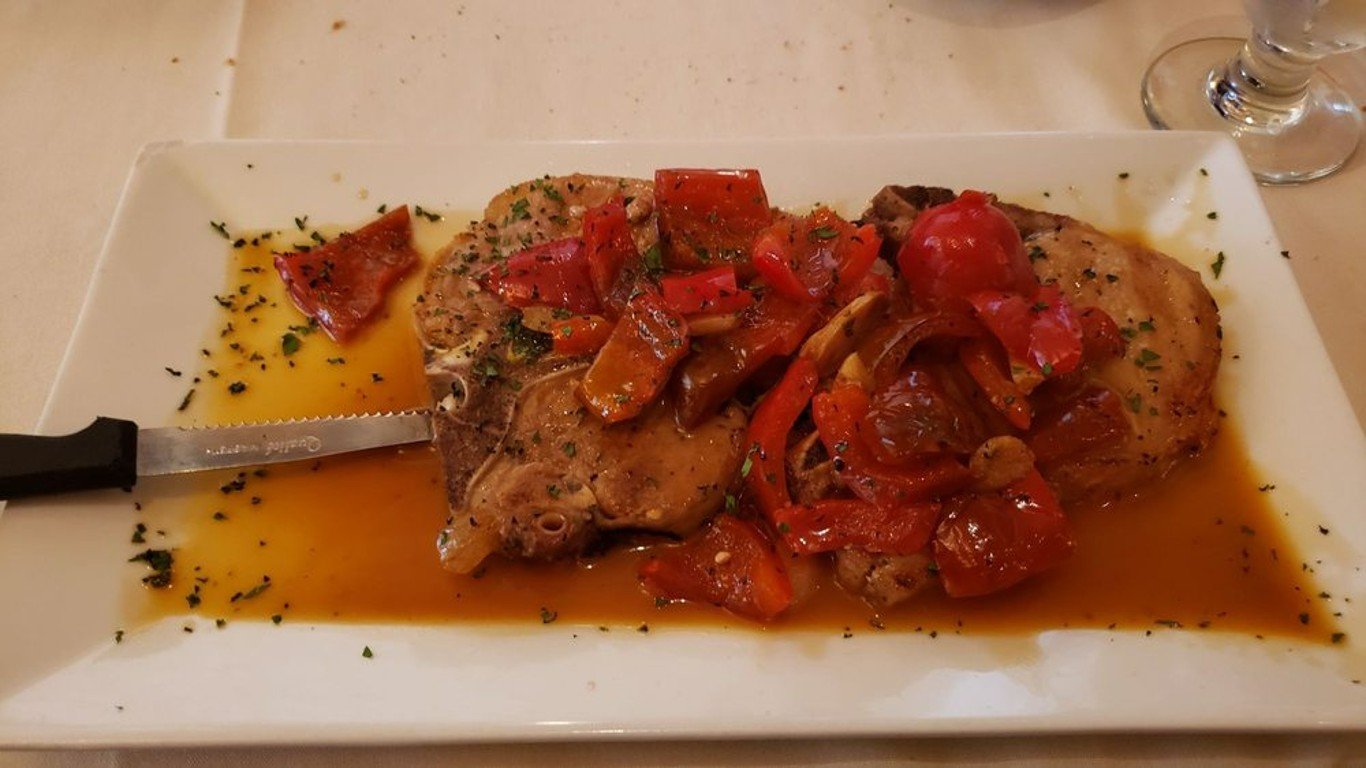
Mario’s
> Location: The Bronx, New York
Mario’s traces its origins to a tiny pizzeria opened in 1919 by Socolastica Migliucci and her son Giuseppe, who came to America from Naples. It gradually grew into a proper restaurant, remaining in the family through the generations. Socolastica’s great-grandson, longtime proprietor Joseph Migliucci, died of COVID-19 in 2020; today, a fifth generation of the family, in the person of his daughter, Regina Migliucci-Delfino, is in charge. Fried calamari, Caesar salad, tortellini in brodo, homemade lasagna, chicken Scarpariello, and Livornese-style tripe are among the choices on the menu.

Matteo’s
> Location: Los Angeles, California
Frank Sinatra was an old pal of Matty “Matteo” Jordan, who established this place in West L.A. back in 1963, and he brought his famous friends to dinner. It’s been thriving ever since, thanks to such classics as baked littleneck clams oreganata, mussels in pesto sauce, vitello tonnato, linguine with seafood, cioppino, and veal parmigiana.
[in-text-ad-2]
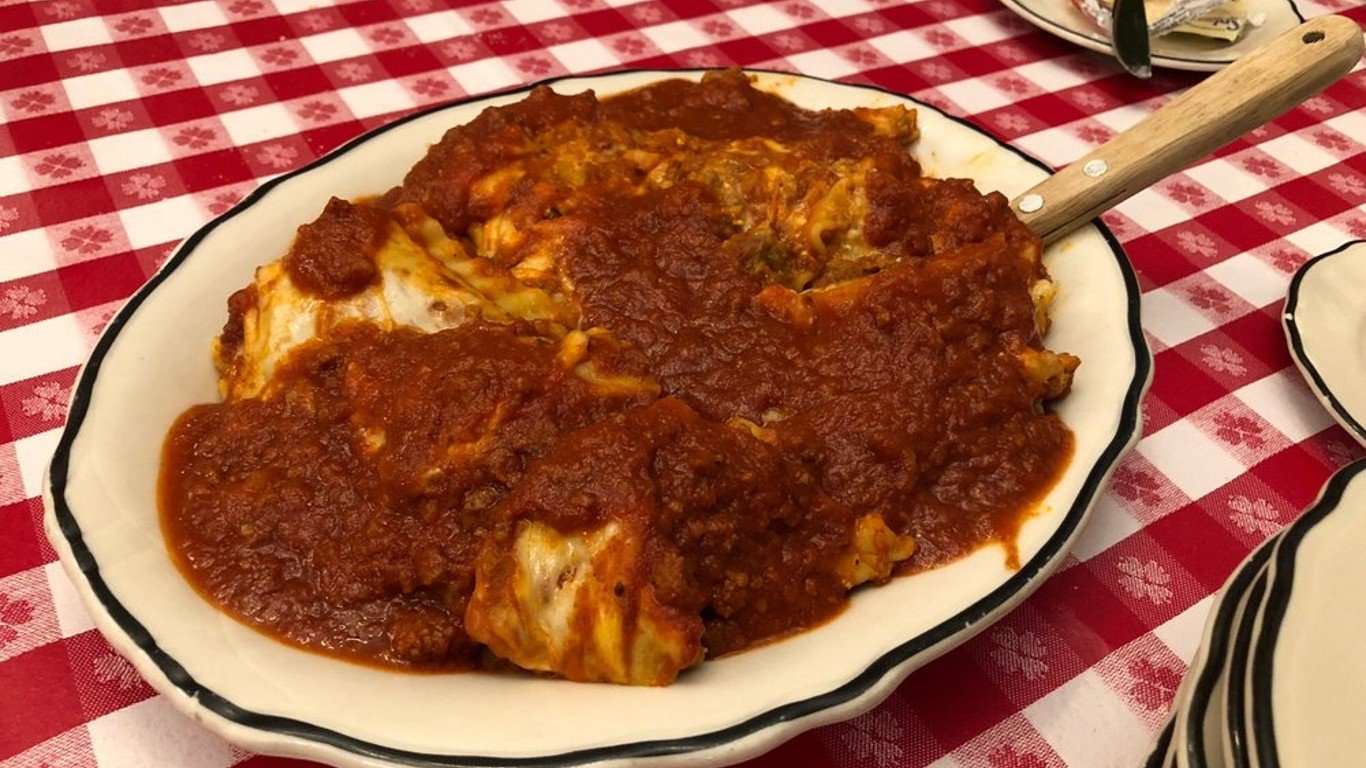
Minard’s Spaghetti Inn
> Location: Clarksburg, West Virginia
Michael and Rose Minard began serving spaghetti in their home dining room in 1937. The following year, Michael’s brother Samuel and Samuel’s wife joined them and turned first the dining room, then the whole first floor of their house into a restaurant. Michael and Rose’s son Joe and in turn his son and daughter joined the business, and it remains family-owned. On the menu are the likes of provolone cheese sticks, meatball or steak hoagies, stuffed shells, eggplant parmigiana, and Delmonico steak.
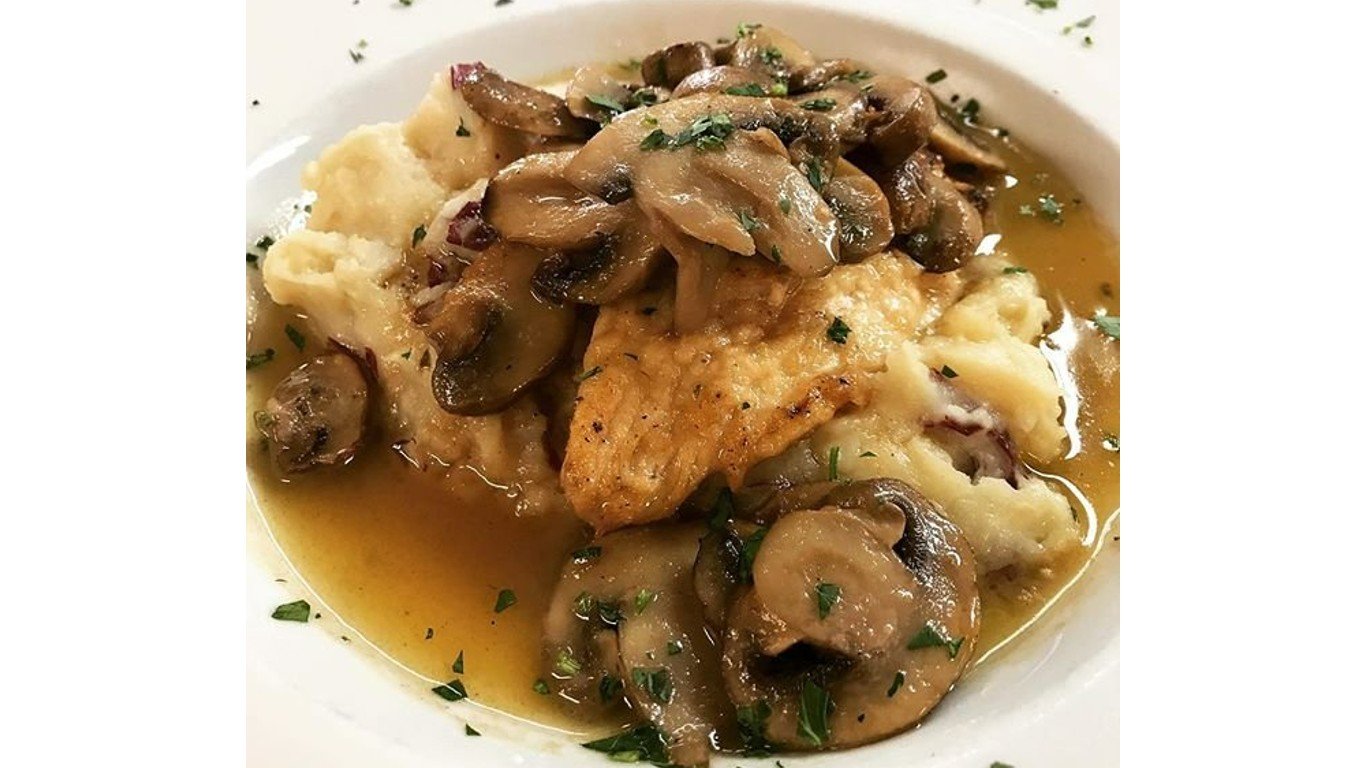
Mrs. Robino’s
> Location: Wilmington, Delaware
Delaware’s own Joe Biden, known for his love of angel hair pasta pomodoro, has been seen dining at Mrs. Robino’s. The place grew out of Tersilla Robino’s home kitchen, where she started serving meals to Italian immigrants in 1939. Her reputation as a cook grew so much that she opened a small restaurant the following year in the building still occupied by the place that bears her name. Robin Robino Mabrey, the founder’s granddaughter, runs the restaurant with two partners today. Italian wedding soup, cannelloni florentine, traditional Italian-American spaghetti with meatballs, grilled sausage with peppers, and a number of pizzas are on the menu. There’s no angel hair pomodoro listed, but they’ll probably come up with some if a certain president stops by.
[in-text-ad]
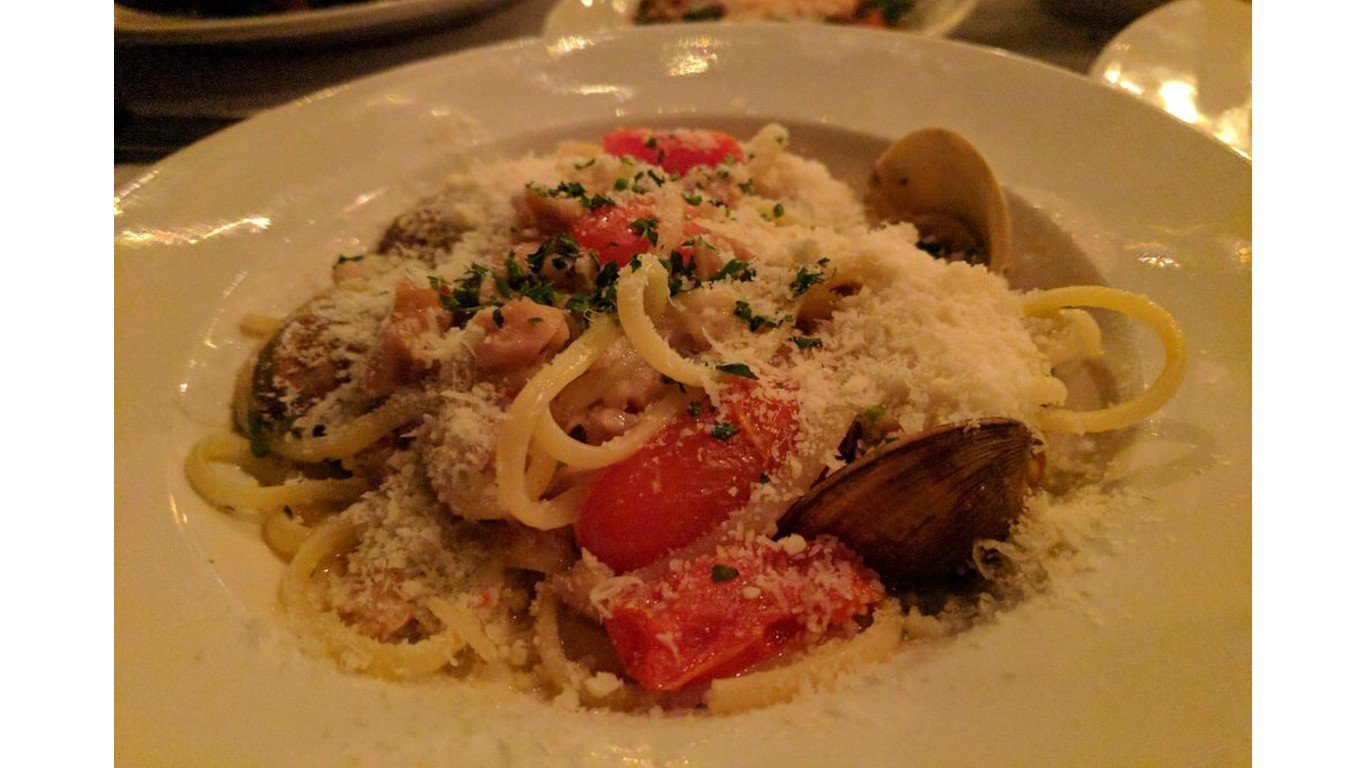
Paul Manno’s Restaurant
> Location: Chesterfield, Missouri
This community in suburban St. Louis gained the attention of Midwestern Italian-restaurant fans when Paul and Concetta Manno opened their place in 1995. Paul Jr. is now at the helm, overseeing a kitchen that produces dishes like lobster ravioli, “mamma’s lasagna,” spaghettini all’amatriciana, scallops al limone, and chicken involtini (stuffed with prosciutto and fontina).

Pellicci’s Ristorante
> Location: Stamford, Connecticut
This southwestern Connecticut community has a large Italian-American population, and Frank and Frances Pellicci opened their restaurant on the city’s then-Italian West Side in 1947. Their son, Anthony, succeeded them, and since his death in 2014, his sister, Toni Lupinacci, has been in charge. The wide-ranging menu includes Rhode Island-style fried calamari, shrimp Giuseppe Verdi (stuffed with crabmeat and spinach and wrapped in prosciutto), cavatelli with broccoli rabe and sausage, numerous pizzas and sandwiches, and a baked chicken dish that is the house signature.
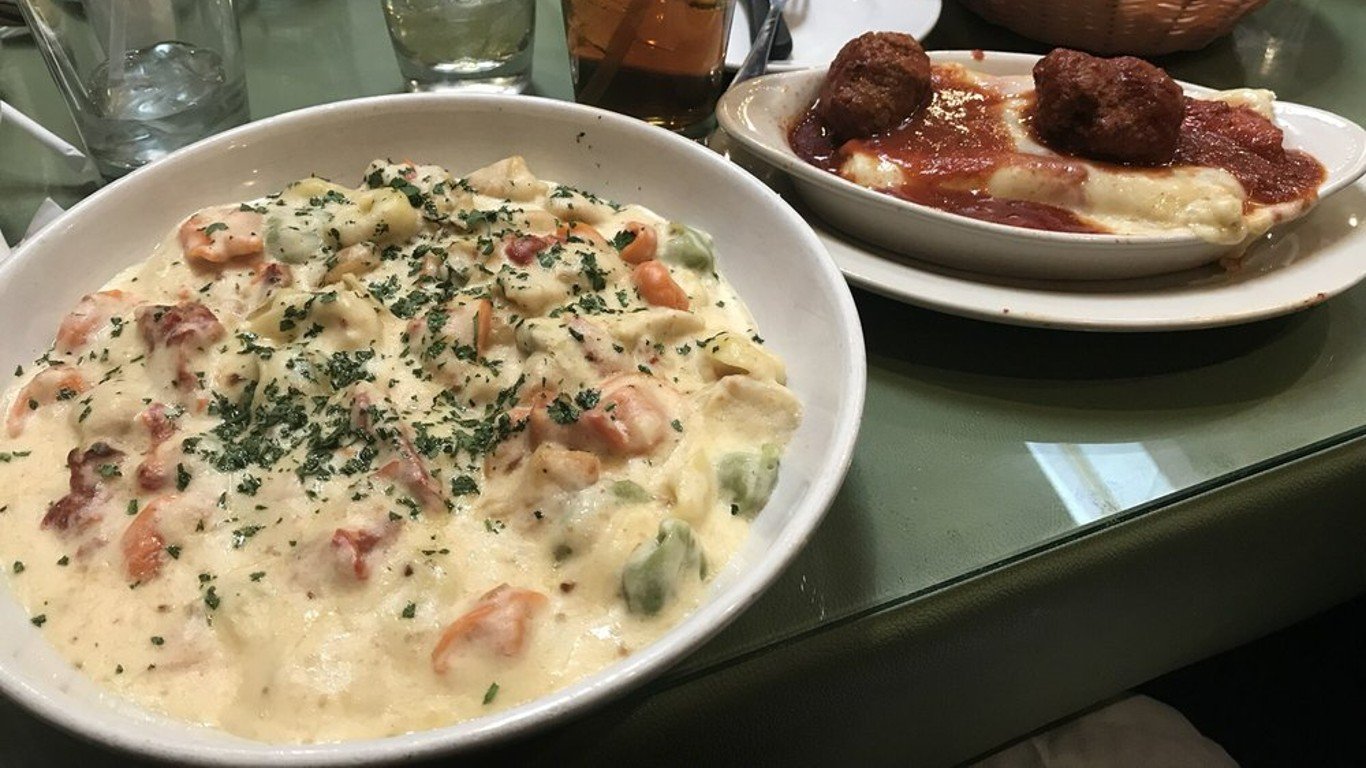
Pompilio’s
> Location: Newport, Kentucky
A saloon opened on the site of what is now Pompilio’s in 1902, but it wasn’t until 1933 that John Pompilio took over the locale, naming it Pompilio House. In 1940, it became Pompilio’s Café, welcoming such celebrities as Frank Sinatra and Marilyn Monroe. Ownership passed to the Mazzei family in 1982, and Mike Mazzei and two partners are now the proprietors. “House classics” include homemade manicotti, rigatoni bolognese, shrimp Alfredo, and veal parmigiana. Pancakes are not served, despite the fact that Dustin Hoffman’s character in the 1988 film “Rain Man” ordered them in a scene shot here.
[in-text-ad-2]
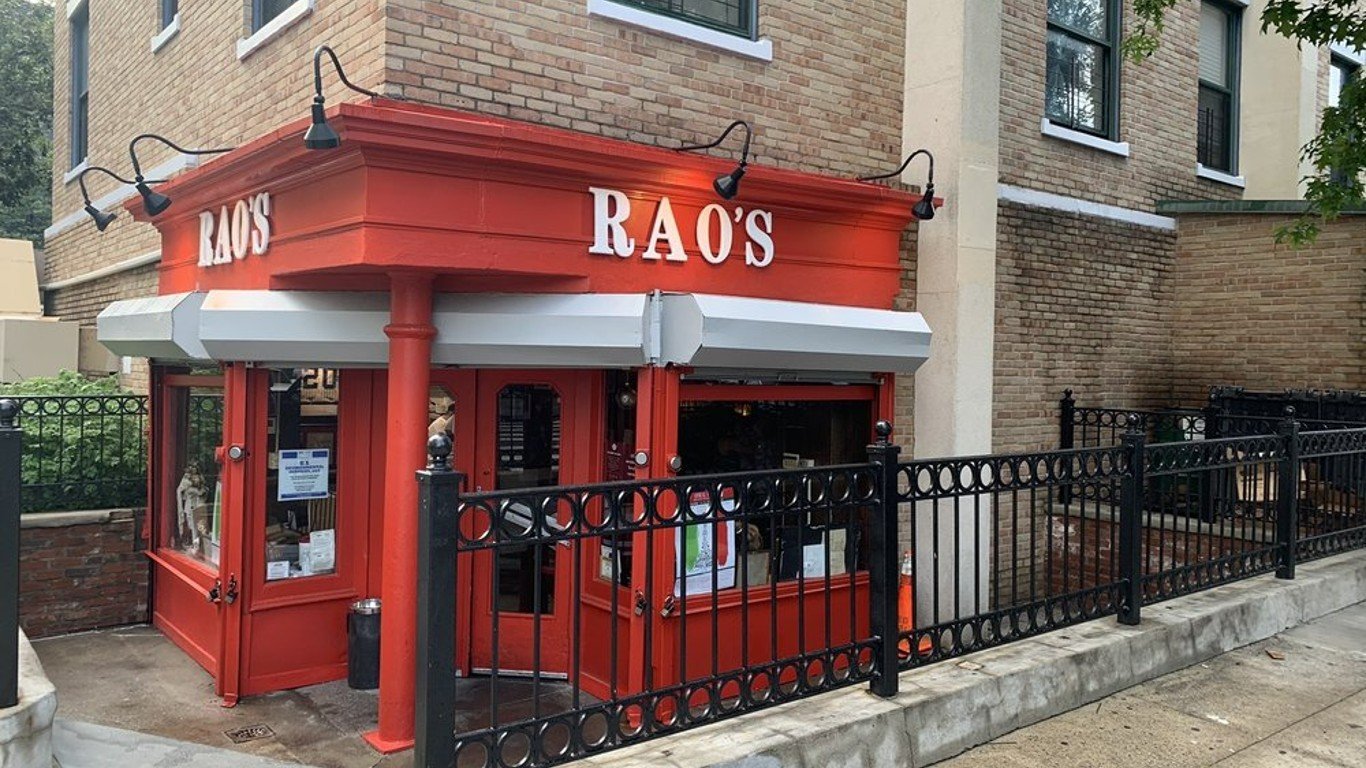
Rao’s
> Location: New York City, New York
This modest-looking old-school place is probably the toughest reservation in New York. Founded in 1896 by Joshua Anthony Rao, it was originally a simple neighborhood restaurant, but after a rave review in the New York Times in 1977, demand for tables became so great that the owners began restricting them to regulars, or to lucky souls to whom regulars would cede their seats. There’s no written menu, but servers offer such things as seafood salad, stuffed clams, various pastas, and the famous Rao’s lemon chicken. For those who can’t get in, there are offshoots, which operate under normal restaurant rules, in Las Vegas and L.A.
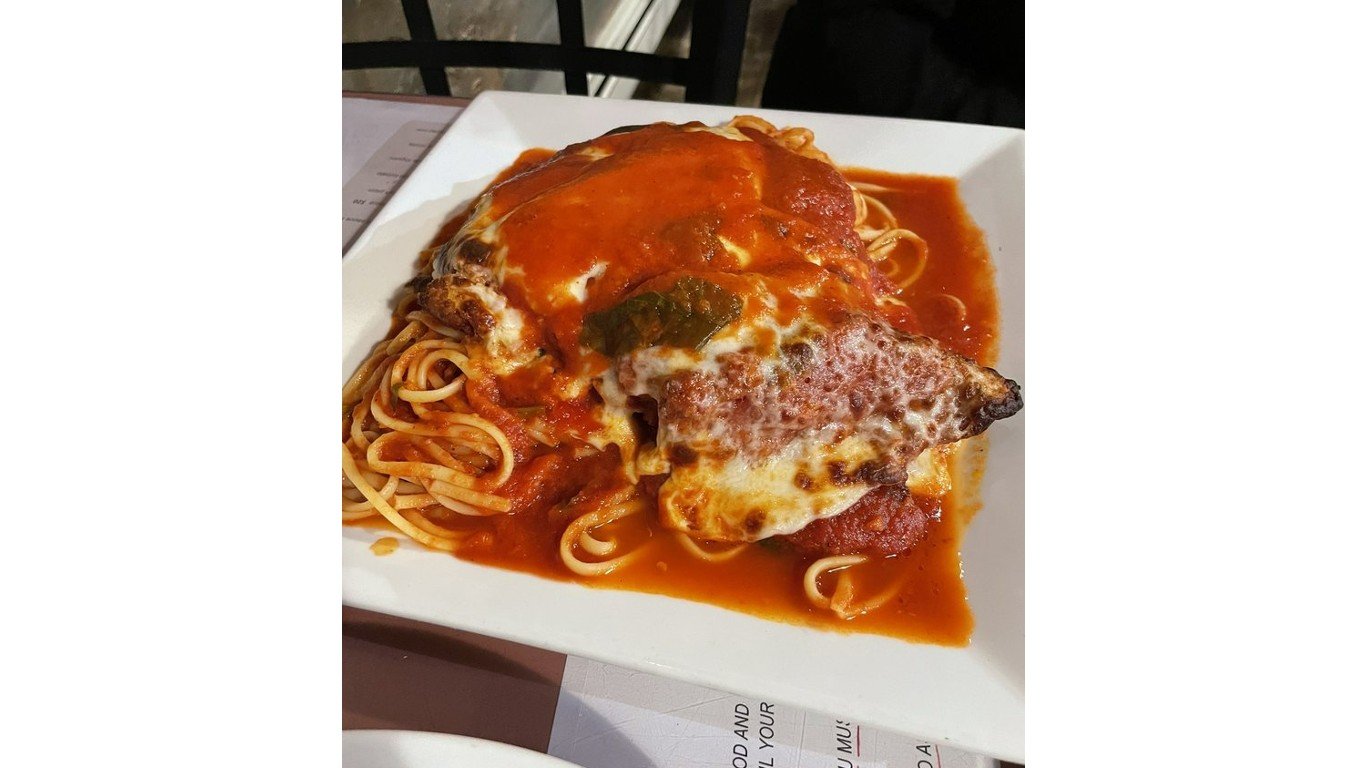
Rino’s Place
> Location: East Boston, Massachusetts
Rino and Anna DiCenso set up shop in residential East Boston in 1997, serving a traditional Italian-American menu including an antipasto plate, baked gnocchi in tomato sauce, lobster ravioli (raved about by Guy Fieri when he featured the place on “Diners, Drive-Ins and Dives”), chicken marsala, and veal saltimbocca. The DiCensos’ son Anthony is now the chef-proprietor.
[in-text-ad]
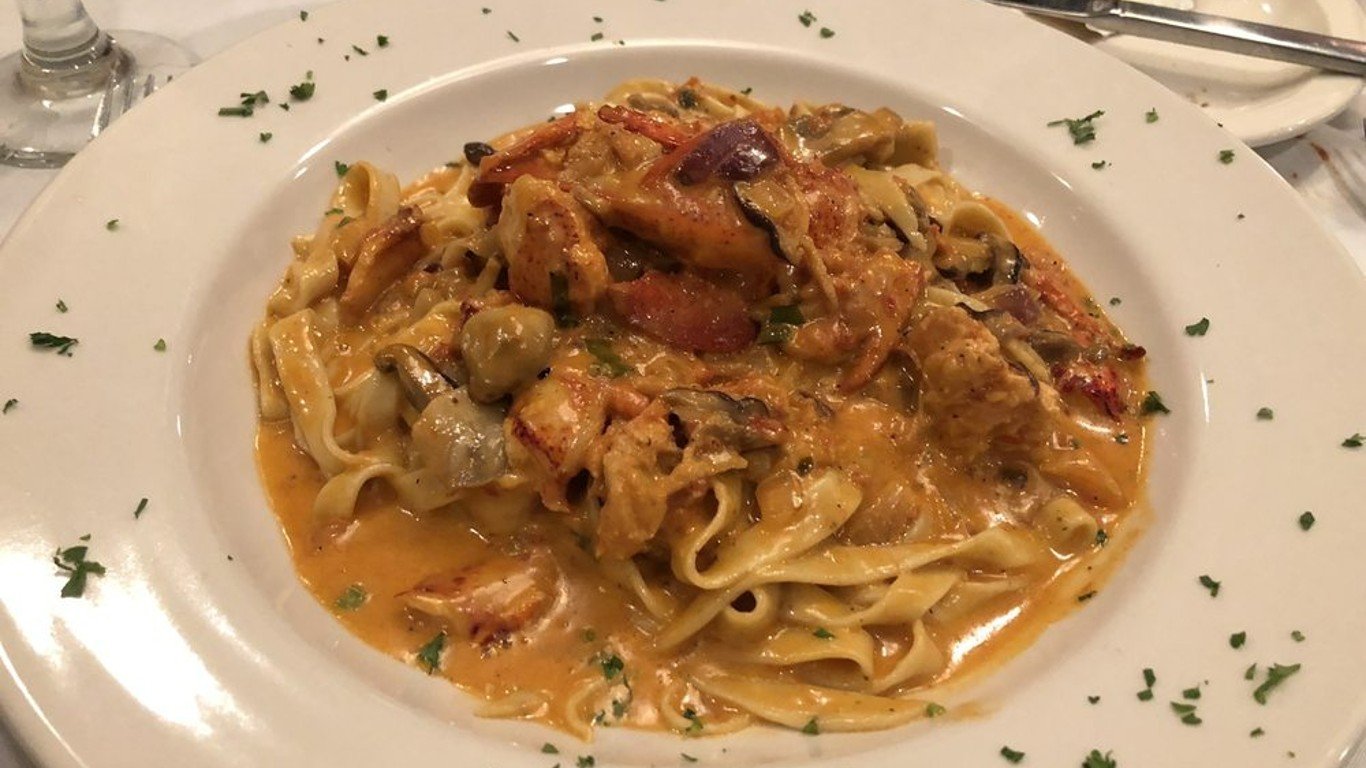
Roberto’s Trattoria & Chophouse
> Location: Sappington, Missouri
Chef Roberto Zanti opened a place he called Zanti’s in the St. Louis suburb of Affton in 1987. In 2003, he renamed it Roberto’s, and four years later he moved to a larger space in nearby Sappington. Since 2018, it’s been Roberto’s Trattoria & Chophouse, with a menu filled with familiar favorites like eggplant parmigiana, toasted ravioli, fettuccine Alfredo, chicken spiedini, and, satisfying the second part of the place’s name, both steaks and a veal rib chop.
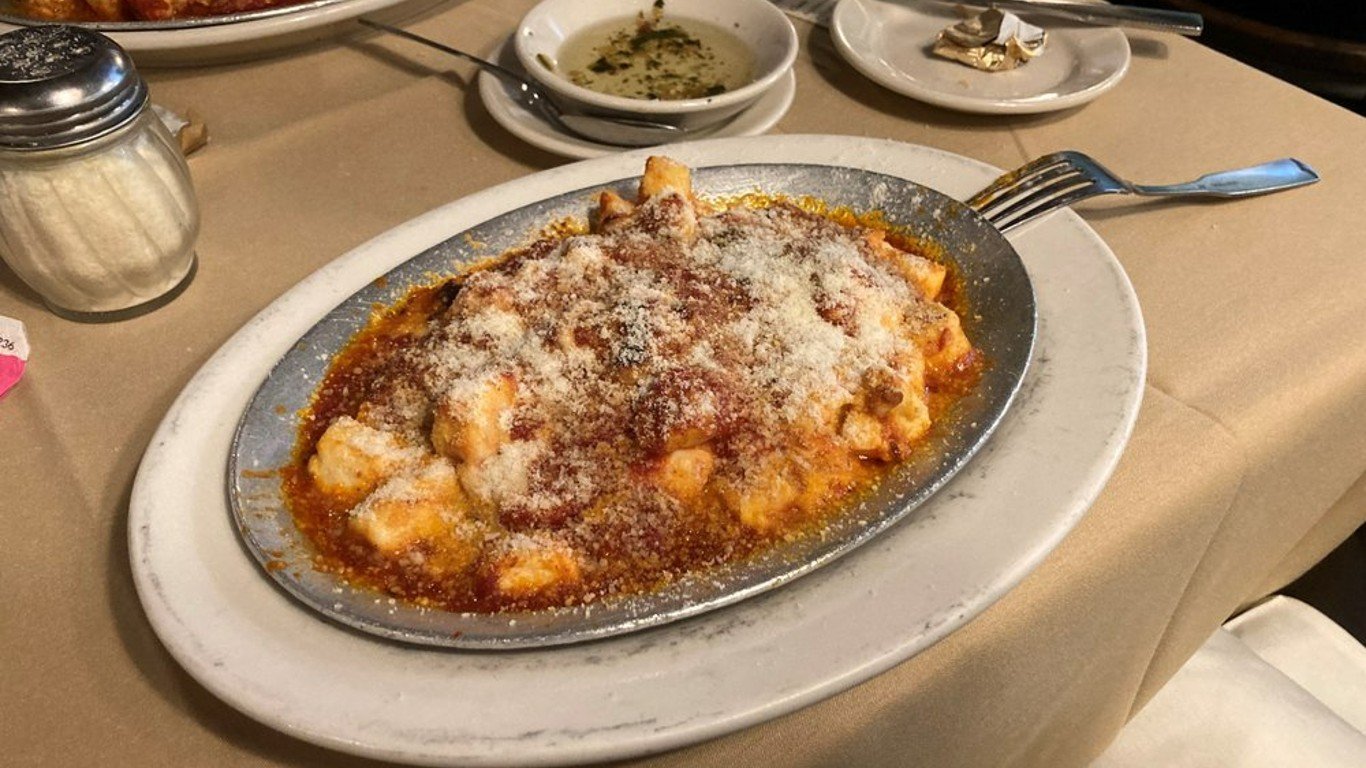
Sabatino’s
> Location: Baltimore, Maryland
In 1955, Joseph Canzani and Sabatino Luperini opened a small family-style restaurant in Baltimore’s Little Italy. Canzani’s nephew, Vince Culotta, now co-owns it with chef Renato Rotondo. The menu includes traditional fare (clams casino, minestrone, gnocchi with tomato or marinara sauce, baked rigatoni, veal Florentine) and house inventions with an old-style spirit — the most famous of which is the Bookmaker Salad, greens topped with shrimp, provolone, Genoa salami, hard-boiled eggs, olives, red onions, tomatoes, and red pepper flakes.
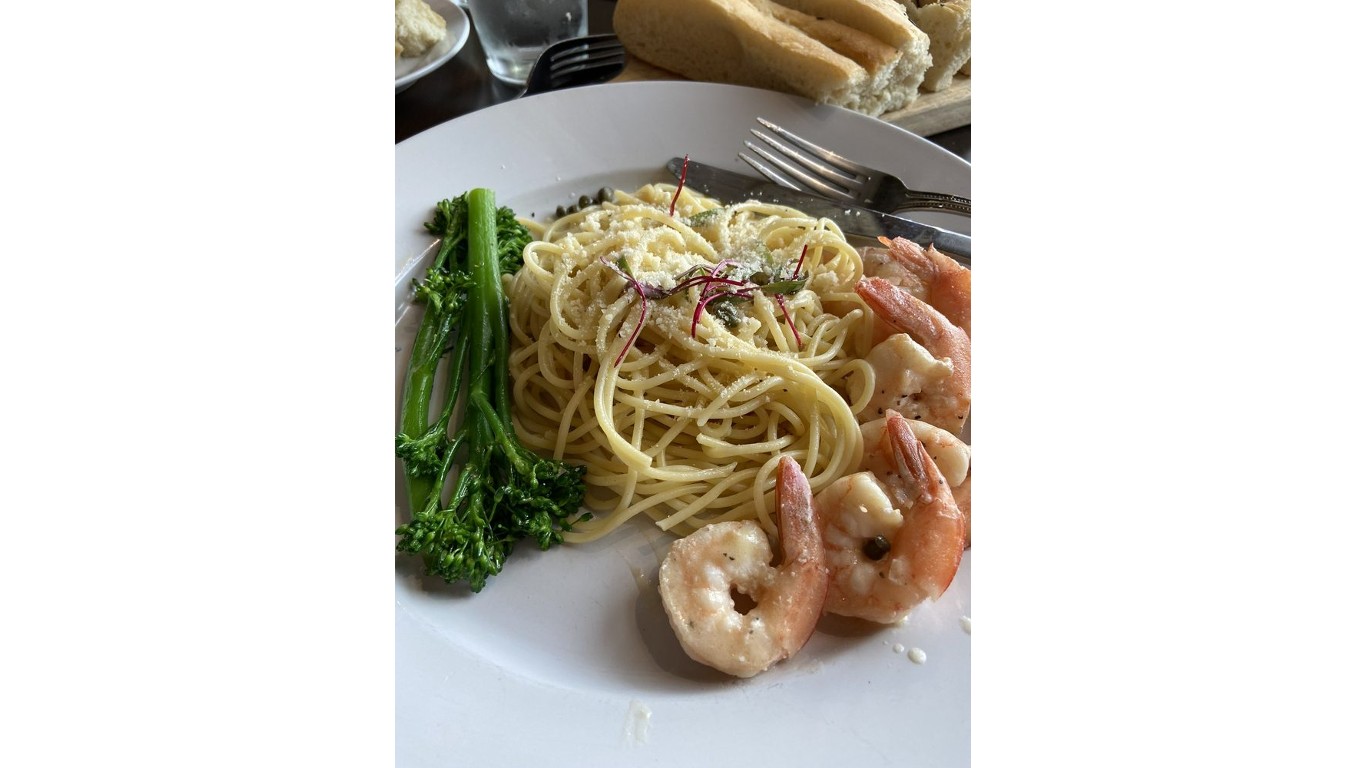
Sabatino’s Italian
> Location: Rapid City, South Dakota
Roman-born chef Alessio Di Sabatino’s Rapid City restaurant is by far the newest old-school place on this list. It opened only in 2020. You wouldn’t know that, though, from its menu of house-made meatballs marinara, fried calamari, Caesar salad, gnocchi al pesto, scampi Fra Diavolo, and filet mignon with gorgonzola, among other old-line favorites.
[in-text-ad-2]
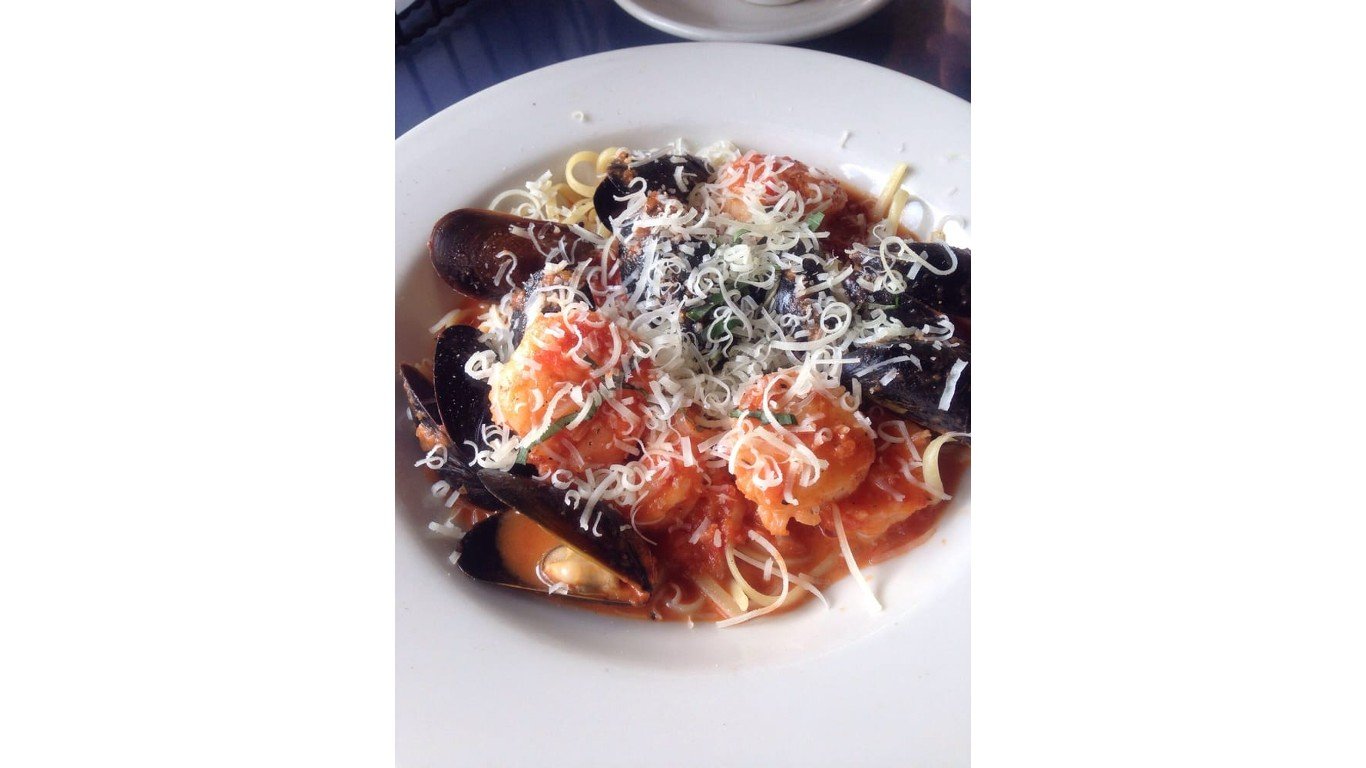
Sarducci’s
> Location: Montpelier, Vermont
Restaurant veterans Carol Paquette and Dorothy Korshak decided that central Vermont needed a good Italian restaurant, so they opened Sarducci’s in 1994. One feature unique to the area at the time was a wood-fired oven, from which come dishes like spinach ravioli baked in garlic-mushroom cream sauce and baked penne with Italian sausage. Korshak retired in 2014 and today Paquette and chef-partner Jeff Butterfield run the place, with a menu that also includes bruschetta with various toppings, crab ravioli with shrimp, chicken piccata, and grilled hanger steak with red wine-balsamic vinegar sauce.
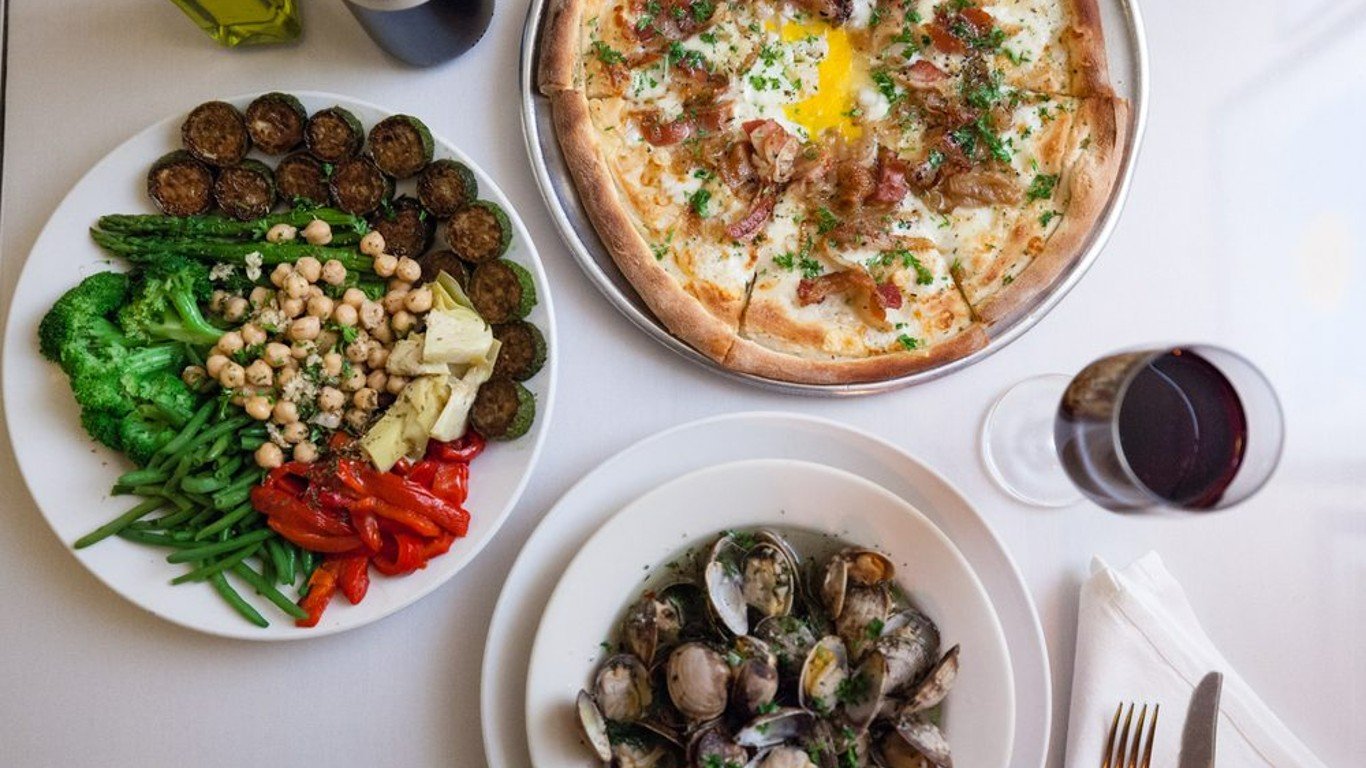
Tommaso’s Ristorante
> Location: San Francisco, California
When the Cantalupo family opened a pizzeria called Lupo in 1935, they installed what is believed to have been the first wood-fired brick oven on the West Coast. It became Tommaso’s in 1971, after they sold it to their longtime chef, Tommy Chin, and he rechristened it after himself Italian-style. When the Crotti family, recently arrived from Lake Como, bought it from Chin two years later, they kept the name. Today, executive chef Lidia Crotti serves caprese salad, spaghetti with marinara or meat sauce, fettuccine with prawns, a baked half chicken with garlic and rosemary, and a range of pizzas and calzones.
[in-text-ad]
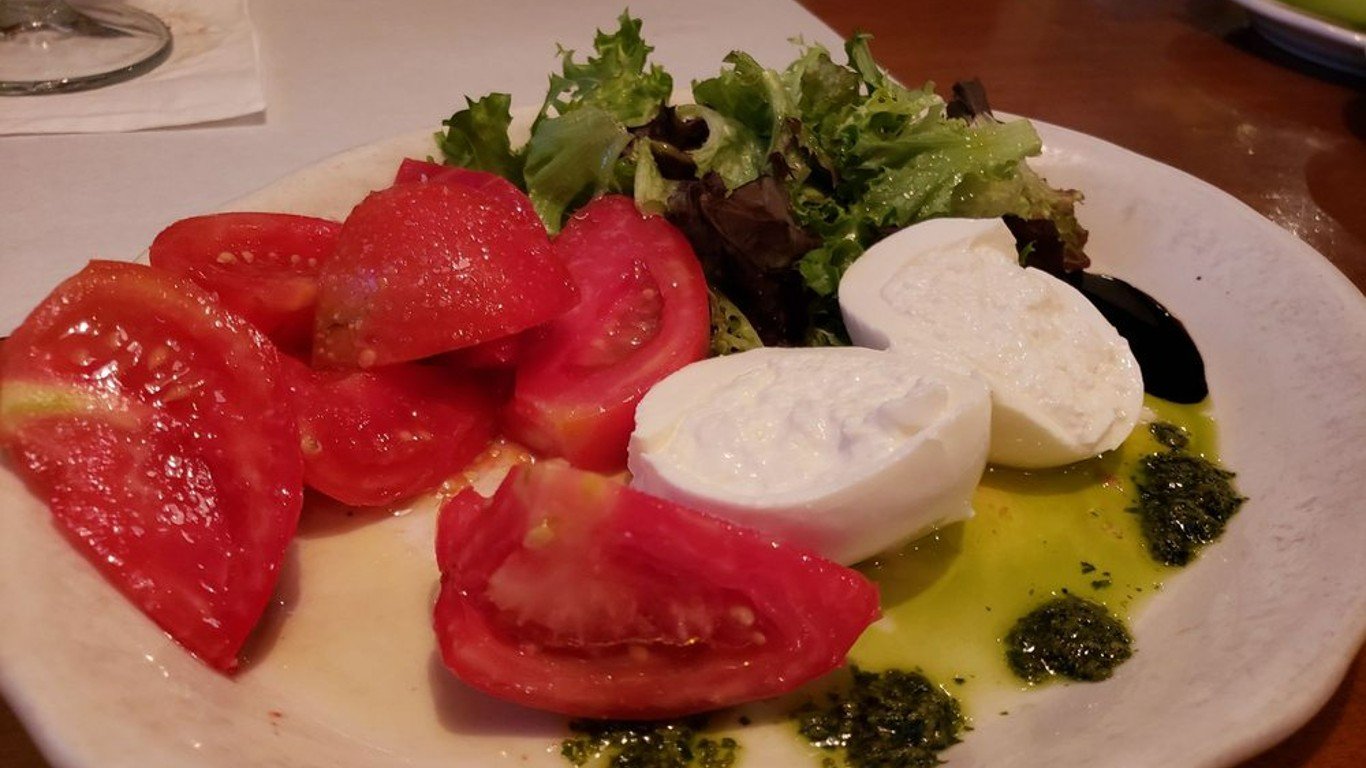
Tursi’s Latin King
> Location: Des Moines, Iowa
Calabrian immigrants Jim and Rose Pigneri opened the Latin King in 1947. In 1983, it was bought by Bob Tursi (whose parents came from the same town as the Pigneris) and his wife, Amy, who added their name to the place and have run it ever since. The fare? Mozzarella sticks, fried zucchini, toasted ravioli with meatballs or sausage, spaghetti with “zesty red sauce” or one of three meat-based sauces, chicken livers Caruso, and a number of steaks and chops, including filet mignon marsala. One unusual feature is an ample selection of seldom-seen Calabrian wines.
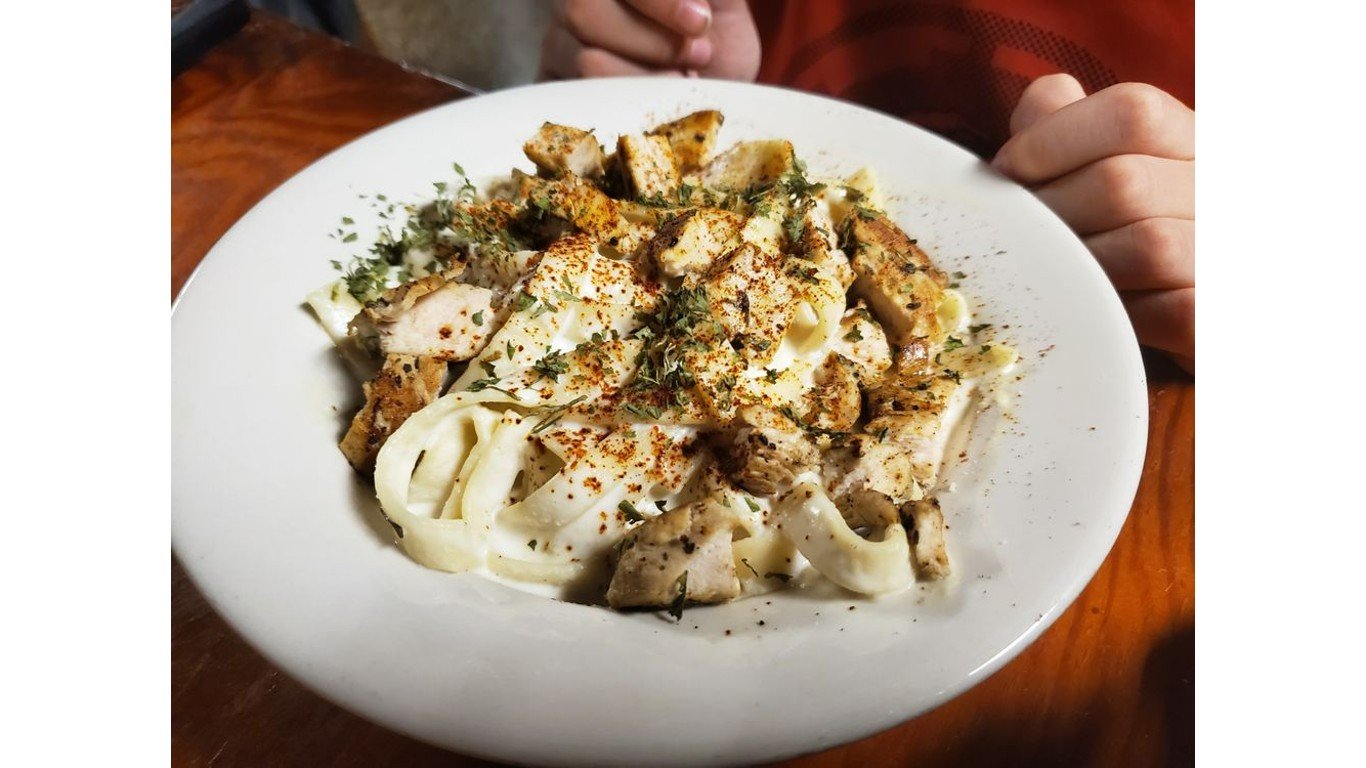
Venesian Inn
> Location: Springdale, Arkansas
The Ozark community of Tontitown was founded by Italian settlers in 1898, and the area — including next-door Springdale — has had a significant Italian-American population ever since. Germano Gasparotto opened this restaurant here in 1947, selling it a few years later to his fellow native-born Italians John and Mary Granata. Their family is still in charge. The main specialty of the region’s Italian restaurants is spaghetti with fried chicken, and the version here is classic. Also offered are three-cheese lasagna, chicken ravioli, fried shrimp, a few sandwiches, and more.

Venezia
> Location: New Orleans, Louisiana
Anthony Carollo, son of the city’s infamous Sicilian-born mob boss Sylvestro “Silver Dollar Sam” Carollo, opened this Crescent City classic — whose neon sign promises “Pizza Pie – Italian Foods” — in 1957. He operated it until 1987, when it was sold to Anthony and Nick Bologna, the current proprietors. Pizza is still featured, but there are also such familiar Italian-American dishes as Caesar salad, spaghetti with meatballs, eggplant parmigiana, and chicken marsala, as well as NOLA’s own Italian-inspired muffaletta sandwich.
[in-text-ad-2]

The Village at Italian Village Restaurants
> Location: Chicago, Illinois
In 1927, Florentine immigrant Alfredo Capitanini launched The Village, decorating it with elaborate Tuscan-inspired murals and installing themed booths like La Banca (The Bank) and La Prigione (The Prison). His three children joined the business in 1955 and added a second restaurant at the same address, the wine-themed La Cantina. A third, The Florentine Room, which evolved into today’s Vivere, opened in 1961, to complete the complex now known as the Italian Village Restaurants. The two newer places are temporarily closed, but the original is going strong, serving a menu that includes chicken broth with pastina, several sandwiches and pizzas, mostaccioli with meat sauce, seafood ravioli, and a house specialty called beef Toscanini — filet mignon medallions with mushrooms and marsala, served with pappardelle pasta.
Essential Tips for Investing: Sponsored
A financial advisor can help you understand the advantages and disadvantages of investment properties. Finding a qualified financial advisor doesn’t have to be hard. SmartAsset’s free tool matches you with up to three financial advisors who serve your area, and you can interview your advisor matches at no cost to decide which one is right for you. If you’re ready to find an advisor who can help you achieve your financial goals, get started now.
Investing in real estate can diversify your portfolio. But expanding your horizons may add additional costs. If you’re an investor looking to minimize expenses, consider checking out online brokerages. They often offer low investment fees, helping you maximize your profit.
Thank you for reading! Have some feedback for us?
Contact the 24/7 Wall St. editorial team.
 24/7 Wall St.
24/7 Wall St.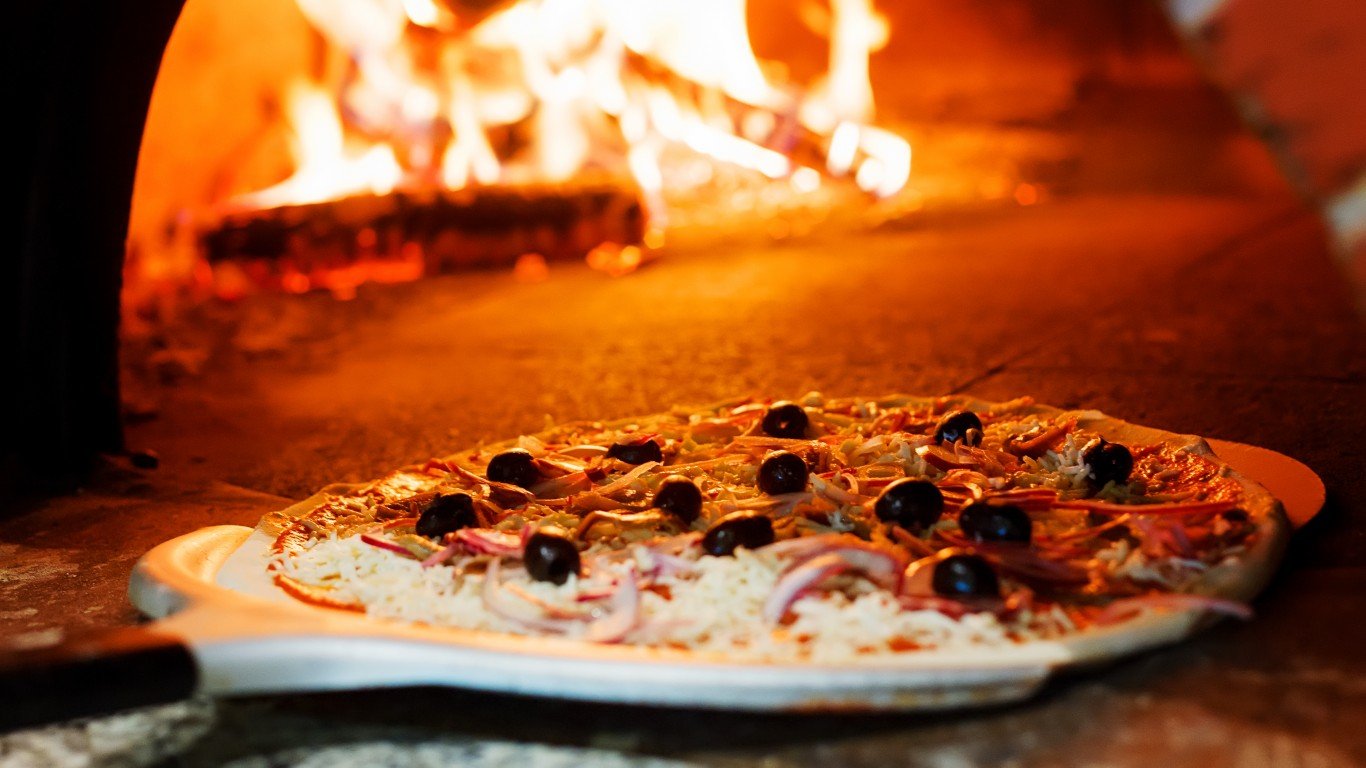 24/7 Wall St.
24/7 Wall St. 24/7 Wall St.
24/7 Wall St. 24/7 Wall St.
24/7 Wall St.